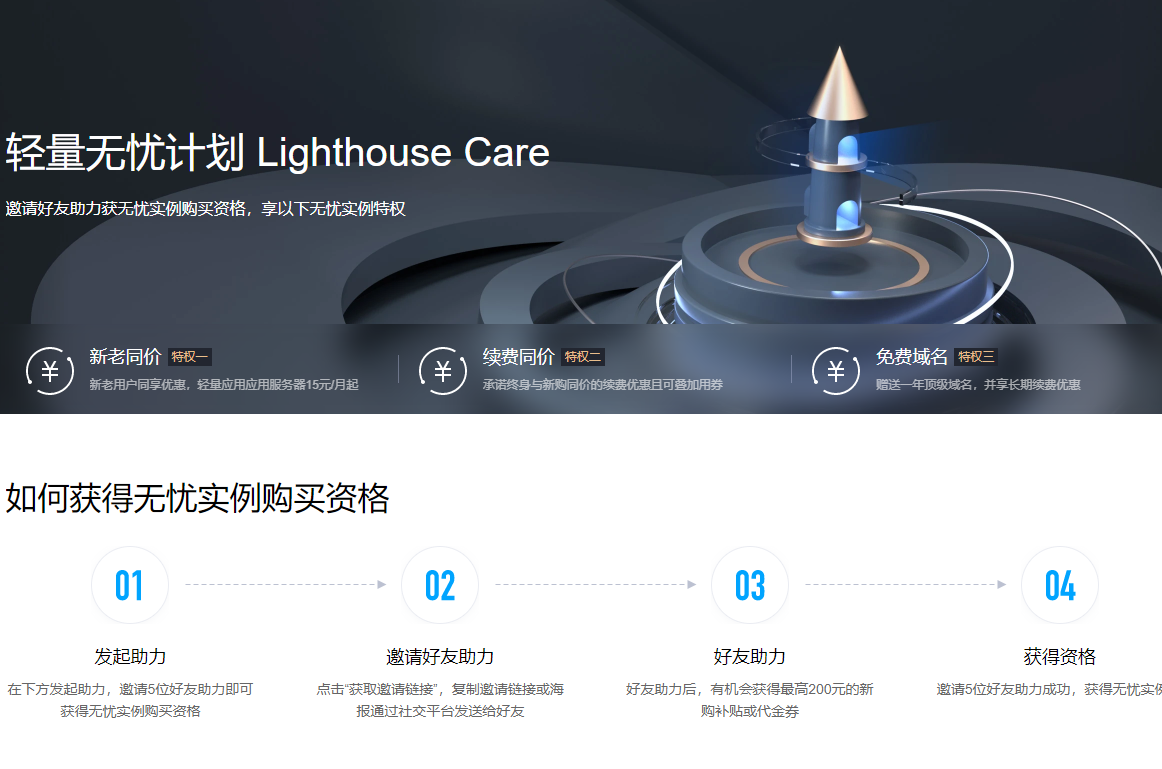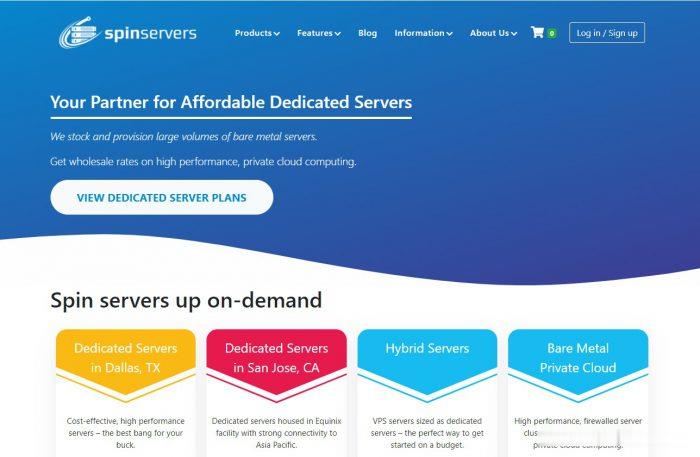attend17happy
17happy 时间:2021-04-09 阅读:()
RESEARCHOpenAccessIt'sfiveo'clocksomewhere:AnexaminationoftheassociationbetweenhappyhourdrinkingandnegativeconsequencesJulieMarieBaldwin1*,JohnMStogner2andBryanLeeMiller3AbstractBackground:Thisstudyaimstounderstandwhichyoungadults'drinkingbehaviorschangeinthepresenceofhappyhourspecials,thewaysinwhichtheychange,andwhetheralinkexistsbetweenhappyhourdrinkingbehaviorandnegativeoutcomes.
Methods:Usingdatacollectedfrombar-goingrespondents(n=1,423)withinaprintsurveyadministeredtoageneralcollegesample(n=2,349),weidentifysignificantdifferencesinchangesinhappyhourbehaviorbetweendemographicgroupsusingχ2testsanddeterminewhetherthisbehaviorisrelatedtosixnegativealcohol-relatedoutcomesusinglogisticalandordinaryleastsquaresregressionmodelswithavarietyofcontrols,includingageofonsetandfrequencyofuse.
Results:Women,studentsunder21,non-athletes,membersofGreek-affiliatedorganizations,moreaffluentandunemployedstudents,andstudentslivingoncampusweremorelikelytochangetheirdrinkingbehaviorinthepresenceofhappyhourspecials.
Ingeneral,themostrobustpredictorsofnegativeeventsaregender,alcoholusefrequency,ageofalcoholuseonset,andincreasingdrinkingduetohappyhours/barspecials.
Whileitwaslinkedtovariousnegativeandillegalbehaviors,alteredhappyhourdrinkingwasnotassociatedwithanincreasedlikelihoodofanalcohol-relatedarrest.
Conclusions:Thisstudylendssupporttotheideathatalcoholpricespecialsshouldberegulatedinanefforttoreducehighconsumptionandalcohol-relatednegativeconsequences.
Futureresearchintotherelationshipbetweenhappyhourdrinkingandnegativeoutcomesisnecessaryandshouldexaminetheimpactofhappyhouradvertisements,differenttypesofspecials,andthetimingofhappyhours.
Keywords:Happyhour,Alcoholprice,Increasedalcoholconsumption,Negativeconsequences,AlcoholpolicyIntroductionResearchhasbeenconsistentinfindingarelationshipbetween"bingedrinking"(broadlydefinedasconsuminganexcessofalcoholicbeveragesinasingleepisode)andnumerousnegativeconsequences.
Specifically,sexualassaultvictimization,violentbehavior,propertydamage,riskysexualbehavior,pooracademicperformance,contactwithlawenforcement,physicalinjury,anddeathhavebeenlinkedtobingedrinkingbehaviorsinyoungadultpopulationse.
g.
,[1-5].
Bingedrinkingcanalsonegativelyaffectthosenotengaginginthebehavior,astheymayhavetocareforaninebriatedpeer,havetheirownactivitiesinterrupted,orbethevictimofatrafficaccidentorsexualassaultfacilitatedbyanother'sintoxication[3,4].
Sincethelate1970s,researchersinavarietyoffieldshaveexaminedtherelationshipbetweenalcoholpricesandalcoholconsumptionbyyouthandyoungadults.
Findingsfromeconometricstudiesaresomewhatmixed[6]butgenerallyindicatethatalcoholconsumptionfol-lowsthedownwardslopingdemandcurvelawwhereasaproductpriceincreases,thequantitydemandedde-creases[6,7].
Resultsinpublichealthstudieshavebeenfairlyconsistentinfindingtheinverserelationshipwhereconsumptionincreasesasthegeneralpriceofalcoholdecreases[7,8].
Overall,alcoholpriceseemstoaffectthedrinkingbehavioroftheyoungadultpopulationmore*Correspondence:jmbaldwin@ualr.
edu1DepartmentofCriminalJustice,UniversityofArkansasatLittleRock,2801S.
UniversityAvenue,RossHall5thFloor,LittleRock,AR72204-1099,USAFulllistofauthorinformationisavailableattheendofthearticle2014Baldwinetal.
;licenseeBioMedCentralLtd.
ThisisanOpenAccessarticledistributedunderthetermsoftheCreativeCommonsAttributionLicense(http://creativecommons.
org/licenses/by/2.
0),whichpermitsunrestricteduse,distribution,andreproductioninanymedium,providedtheoriginalworkisproperlycredited.
TheCreativeCommonsPublicDomainDedicationwaiver(http://creativecommons.
org/publicdomain/zero/1.
0/)appliestothedatamadeavailableinthisarticle,unlessotherwisestated.
Baldwinetal.
SubstanceAbuseTreatment,Prevention,andPolicy2014,9:17http://www.
substanceabusepolicy.
com/content/9/1/17thanotheragegroups[8,9],butitalsosignificantlyaf-fectsadolescentdrinking[10].
Thepriceofalcoholmaybereducedduetomarketcompetitionbetweenmanufacturers,competitionbe-tweenretailors,decreasesinliquorand/orbeertax,and,mostrelevanttothecurrentstudy,barsandrestaurantsutilizinghappyhourspecialstoincreasepatronagedur-ingtraditionallynon-peakhours.
Happyhourisatermforasetperiodoftime,oftenadvertised,whenanestab-lishmentservesalcoholatadiscountedrate.
Severalstudieshavefocusedoncollegepopulationsandhappyhours/drinkspecials,whichiswarrantedbecausena-tionalstudiesintheU.
S.
havereportedthatmorethan40%ofcollegestudentsengagedinbingedrinkinginthelastyear[11-14].
Further,approximately1,700deathsandanadditional600,000traumasamongU.
S.
collegestudentsresultfromalcoholuseeachyear[2].
Researchhasprimarilyfoundanincreaseinalcoholconsumptionanddrinkingintentionsofcollegestudentsduringhappyhourspecialswithsomestudiesnotingdif-ferencesbysexandage.
IntheU.
S.
,Kuoetal.
(2003)foundthatlowalcoholpricesandfrequentalcoholpro-motionsbyon-andoff-campusestablishmentswerere-latedtohigherself-reportsofbingedrinkingbycollegestudents[9].
Thombsetal.
's(2008)fieldstudyintheU.
S.
alsofoundtheinverserelationshipbetweenalcoholspecialsandconsumption[15].
Theirnaturalobserva-tionofpatronsexitingbarsfoundthatthosewhoboughtalcoholonspecialwere4.
38timesmorelikelytohaveaBACofatleast80mg/dlthanthosewhodidnot.
Whilemales'consumptionwashigherthanfemales,thelevelsofintoxicationachievedweresimilaracrosssexes.
Indi-vidualsbelowthelegaldrinkingage(under21)hadhigherlevelsofintoxicationthanpatronsofthelegaldrinkingage[15].
OtherstudiesintheU.
S.
showaposi-tivecorrelationbetweenstudents'perceptionsoftheirdrinkingintentionsandbehaviorandalcoholpromo-tionsandadvertising[3,16].
Althoughconcernsexistaboutgeneralizingresultsofcollegestudentsintheirnaturaldrinkingenvironments,studiesofotherpopulationsandinsimulatedenviron-mentsechopreviousfindings.
Forexample,anAustralianstudyofcommunityfootballclubsfoundthathappyhourpromotionswereassociatedwithclubmembersbeingmorethantwiceaslikelytoconsumealcoholtoexcess[17].
Additionally,Baboretal.
's(1978)experimentfoundthatbothcasualandheavydrinkersconsumedmorethantwiceasmuchalcoholinsimulatedhappyhoursincomparisontoconsumptionintheabsenceofalcoholspecials[18].
Becauseofthelinksbetweenincreasedalcoholcon-sumptionandnegativeconsequencesandbetweenthedecreasedcostofalcoholandincreasedconsumption,someresearcherse.
g.
,[7]havearguedthatpolicymakersshouldincreasealcoholpricesinanefforttodecreaseconsumptionandreducethenegativeconsequencesas-sociatedwithhighconsumption.
StudieshavefoundthatincreasingbeerexcisetaxesintheU.
S.
wasoneofthemosteffectivemechanismsinreducingdrinkinganddrivingforyouths[19-21].
Intheirreviewofthelitera-ture,Chaloupkaetal.
[7]concludedthatanincreaseinalcoholpricesandthefinancialcostsofpenalties(e.
g.
,increasesintheactualpurchasepriceofalcohol,in-creasesintheexpectedlegalcostsofdrivingundertheinfluencefrommoreseverelaws),aswellasfurtherlim-itingavailability,reducesdrinkinganddrivinganditsconsequencesintheentirepopulation[7].
Beertaxhasastronginverserelationshipwithworkplaceinjuries[22],andincreasesinliquorandbeertaxhavealsobeenlinkedtodecreasesingonorrheaandsyphilisrates[23].
However,theeffectofincreasedalcoholpricesoncir-rhosismortalityismixed[24-26].
Researchinthisareahasthepotentialforimportantpolicyimplications.
Severalcountries,states,andlocal-itieshaveattemptedtobanorregulatehappyhourpro-motionsincludinghowandwhethertheyareadvertised.
Forexample,theAustralianCodeofPracticeforRe-sponsiblePromotionofLiquorProductsrestrictsadver-tisementsforhappyhours,althoughresearchrevealsthatmanyvenuesregularlybreachboththespiritandtheletterofthecode[27].
IntheU.
S.
,legislationhasvariedonalcoholpricesandtheadvertisementofalco-holpromotions.
Currently,Utahhasbannedhappyhours[28],andMassachusettshasbannedbarsfromof-feringdrinksspecials[29],resultinginbarownersoffer-ingspecialsonfoodinsteadofalcohol.
Oregonallowshappyhourspecialsbutprohibitstheadvertisingofhappyhoursandprohibitsadvertisingofpurchasingmorethanonedrinkataspecialprice(e.
g.
,buyonegetonefree,twoforone)[30].
Virginiaalsopermitshappyhourspecials,butestablishmentscannotadvertisespe-cificdrinkspecials,havehappyhoursbetweencertainhours,andhavelimitsonthenumberofdrinksanindi-vidualcanpossessatonetime[31].
SomestateswithintheU.
S.
haverecentlyamendedtheiralcoholpriceandpromotionlegislation.
AlthoughVirginiastillhasrestrictionsinplace(previouslypresented),itrepealedapreviousbaninJanuaryof2014thatprohibitedadvertisinganyhappyhourspecialsthroughelectronicandprintmedia(e.
g.
,Internet,radio,TV,newspaper,so-cialmedia)[31].
In2012,Kansasrepealedits26-year-oldhappyhourban[32].
Pennsylvaniarecentlyincreasedthetimeframeinwhichhappyhourspecialscanbeofferedbutlimitsthenumberofhoursperweek,restrictsthetimeframes,andlimitsthenumberofdrinksanindividualcanhaveatanypointintime[33].
Althoughresearchhasindividuallyexploredtherela-tionshipbetweenalcoholpricingandconsumptionorBaldwinetal.
SubstanceAbuseTreatment,Prevention,andPolicy2014,9:17Page2of12http://www.
substanceabusepolicy.
com/content/9/1/17intoxicationlevels,aswellastherelationshipbetweenconsumptionandnegativeconsequences,researchhasyettoexaminetherelationshipbetweenhappyhourdrinkingbehaviorandnegativeoutcomes.
Themajorityofextantstudiesfocusonoverallpricesordaylongdrinkspecialswithoutconsideringtime-limitedreductionsincoststhatmaydrivebothincreasesintotalalcoholcon-sumptionandincreasesinthespeedofconsumption.
Shortwindowsoflower-pricedalcoholmayleadfinan-ciallyconstrainedconsumerstodrinkalargerquantityofalcoholinashortperiodoftimetomaximizetheper-ceivedreturnontheirspending.
Assuch,thisstudyaimstounderstandwhosedrinkingbehaviorschangeinthepresenceofhappyhourspecials,thewayinwhichtheychange,and,further,whetherthereisalinkbetweenhappyhourdrinkingbehaviorandnegativeoutcomessuchasintoxicateddriving,alcohol-relatedarrests,riskysexualbehavior,fighting,andgeneralalcohol-relatedproblems.
MethodsDataTheoveralldatacollectioneffort,titled"AnExaminationofUndergraduateSubstanceUseandHigh-RiskBehavior,"wasreviewedforethicalconcernsbytheInstitutionalReviewBoardofGeorgiaSouthernUniversity,UnitedStates.
Afterminormodifications,itreceivedapproval(IRBprotocolH12032)duringthefallof2011.
InJanuarythroughMarchof2012,aprintsurveywasadministeredto2,349studentsattendingclassesattheUniversity.
Theuniversityissituatedinasmalltownwithnumerousestablishmentsthatservealcoholwithinashortwalkingdistanceofcampus.
Giventhelargeuniversitypopulationrelativetothesizeofthetown'snon-collegiatepopulation(roughly2:1),mostoftheseestablishmentsprimarilyservethecollegestudentpopulation.
However,theuniversityislocatedwithina"drycounty",meaningliquordrinkscanbeboughtatabarandconsumedonpremise,butliquorbottlescannotbepurchasedatastorewithinthecountyandtakenhometoconsume.
Inordertoobtainthesample,40classeswereran-domlyselectedfromtwostrata:15highenrollmentcourses(100ormorestudents)and25moderateenroll-mentclasses(30to99students).
Duetothefeasibilityissuesthatexistinadministeringapapersurveyinnon-traditionalclassrooms,laboratory,online,andkinesi-ologycourseswereremovedfromthesamplingframe.
Asingleresearchassistantadministeredthesurveyineachselectedclassonadatechosenbytheinstructor.
Incaseswhereinstructorsdeniedaccesstotheirclasses,randomlyselectedclassesfromtheirrespectivestratare-placedthesecourses.
Studentswerenotrequiredtopar-ticipateinthestudynorwereanyattemptsmadetocontactabsentstudents.
Theresultingsampleof2,349studentsrepresentsmorethan80%ofthoseenrolledinthecoursesattheendofthefirstweekofclasses.
aThefullsamplewaslargelyrepresentativeofthestu-dentpopulation.
Whereasthestudentpopulationwas51.
5%female,65.
5%White,25.
0%AfricanAmerican,and3.
8%Hispanic,thesamplewas51.
6%female,68.
9%White,24.
4%AfricanAmerican,and2.
8%Hispanicwithasmallportionofstudentsfallingintootherrace/ethni-citycategories.
Themedianfamilyincomecategoryofthefullsamplewas$75,000to$99,999.
Respondentsre-portedameanageof20.
06,and2.
8%self-identifiedasgay,bisexual,ortransgender.
MembersofGreek-affiliatedorganizationsconstituted15.
7%ofthesample,and5.
3%werestudentathletes.
ThesamplehadameanGPAof3.
017;however,339werefirstsemesterstudentsandhavenotyetestablishedaGPA.
Astheinterestofthepresentstudyliessolelyintheimpactofhappyhourdrinking,weonlyfocusonthosethatreportedhavinghadtheopportunitytoengageinthebehaviorinthepast.
Theanalyticsamplewasre-strictedtothosethateitherwereoldenoughtolegallydrink,hadfakeidentification,orself-reportedotherac-cesstoalcoholinabarorrestaurant.
Thiseliminatedapproximately36.
7%oftheinitialsample.
Thesamplewasfurtherrestrictedtoalcoholusers.
Thisrestrictionremoved4.
1%oftheremainingsample,resultinginatotalsamplesizeof1,423respondents(60.
6%oftheori-ginalsample).
Comparedtothoseeliminatedfromthefullsample,theanalyticsamplecontainedasmallerper-centageoffemales(49.
4%;χ2=7.
711,1df,p=.
005),fewerAfricanAmericans(16.
6%),alargerpercentageofWhites(77.
3%;χ2=127.
889,2df,p<.
001),andmorestudentsinGreek-affiliatedorganizations(21.
4%;χ2=86.
806,1df,p,.
001).
Themeanagefortheanalyticsam-pleisslightlyhigher(20.
60yearsold;t=11.
022,2339df,p<.
001);however,itisstilllessthanthelegaldrinkingage.
Weattributethistothe788studentsthatreportedhavingusedfalseidentificationatabarorclub.
TheGPAoftheanalyticsamplewasslightlyhigher(3.
060)thanthoseexcluded(2.
992).
Thisdifferencewassignifi-cant(t=2.
429,2008df,p=.
015)butsmallinmagnitude.
Allotherdemographiccharacteristicsarenotsignifi-cantlydifferentfromthoseofthefullsample.
MeasuresHappyhourdrinkingAsingleitemaskedrespondents"Comparedtonormaldrinking,howdoesyourdrinkingchangewhenyouattendabarwithahappyhourordrinkspecial"Respondentsselectedoneofthefollowing:"Idrinkmore"(32.
5%),"Idrinkmorequickly"(8.
6%),"Idrinkmoreandmorequickly"(23.
0%),"Mydrinkingdoesn'tchange"(32.
5%),or"Idrinklessand/ormoreslowly"(3.
4%).
ForthemainBaldwinetal.
SubstanceAbuseTreatment,Prevention,andPolicy2014,9:17Page3of12http://www.
substanceabusepolicy.
com/content/9/1/17analysis,thefirstthreeresponseswerecollapsedintoasinglecategoryrepresentingthosewhoincreaseddrinkingduringhappyhours(64.
1%),andthefinaltwowerecol-lapsedintoacategoryrepresentingthosewhodonotin-creasetheirdrinkingduringhappyhours(35.
9%).
Thesemeasuresrepresentanytypeofincreaseindrinkingbe-haviorsandnottheamountofdrinking.
Thisisconsistentwithourfocusontheeffectofhappyhourspecialsratherthanoverallalcoholconsumption.
NegativeoutcomesSixdistinctnegativeoutcomesrelatedtoalcoholuseinthelastyearwereevaluated.
Fiveoftheseweredichotom-ousmeasuresthatindicatedwhetheraspecificalcohol-relatedeventoccurred.
First,aself-reporteddrivingundertheinfluencemeasurewascreatedfromaquestionthataskedrespondentsiftheyhaddrivenacar/truckontheroadafterfiveormoredrinks.
Second,weincludedameasurethatassessedwhethertherespondentshadanyalcohol-relatedarrests.
Thosehavingbeenarrestedorcitedfordrivingundertheinfluence,opencontainerviola-tions,usingafakeIDtoobtainalcohol,underagealcoholuse,orpublicdrunkennesswerecodedashavinganalcohol-relatedarrest.
Third,wefocusedsolelyonarrestorcitationfordrivingundertheinfluence.
Fourth,re-spondentswereaskedwhethertheyhadengagedinun-protectedsexualintercoursewithastrangerwhileintoxicated.
Fifth,respondentswereaskedwhethertheyhadengagedin"maliciousfighting"whileintoxicatedwithclarificationthatitdidnotinclude"playfighting,wrestling,orsparring.
"Finally,alast-yearalcohol-relatedproblemsscalesimilartothatpreviouslyusedbyManey,Higham-Gardill,andMahoney(2002)[34]wascreated(α=.
814).
TenLikert-typeitemswithsixoptionchoices,rangingfrom"notaproblem"(1)to"severe"(6),assessedtheseverityofproblemsthatre-sultedfromalcoholuse.
Itemsaskedrespondentswhetherandtowhatdegreealcoholhadaffectedfamil-ialrelationships,friendships,romanticrelationships,physicalhealth,emotionalwell-being,andfinances,aswellascreatedlegalproblems.
Thisscaleisintendedforpopulationssuchasthisoneandattemptstodeter-minethedegreetowhichalcoholmoregenerallycre-atedproblemsinaperson'slife.
AlcoholusefrequencyThefrequencyofalcoholconsumptionisincludedasacontrolintheregressionmodelsandismeasuredwiththealcoholitemfromasectionthataskedrespondentstoindicate"thenumberofdaysthatyouhaveusedeachofthefollowingsubstancesrecreationallyinthelast30days"(emphasisinsurvey).
Respondentswerepro-videdsixoptionsonanordinalscaleranging"fromnone"(0)to"twentyormoredays"(5).
Note,nomeasureofaveragedrinksconsumedineachdrinkingepisodeiscontainedwithinthedata.
Theageoffirstalcoholusewasquantifiedasweredemographicfactors.
Theuseofothersubstanceswasnotincludedintheanalysisbecauseacross-sectionalsurveydesignpreventsusfromestablishingwhetherthenegativeout-comesprecededtheuseofotherdrugs.
Whereasalcoholusenecessarilyhastoprecededrivingundertheinflu-enceorfightingwhileintoxicated,marijuanauseandotherdrugusemayhaveonlyoccurredfollowingthoseevents;thus,theywouldbeinappropriatecontrols.
AnalyticstrategyWefirstpresentanalysesfocusedondeterminingwhichstudentschangetheirbehaviorinthepresenceofhappyhoursandalcoholspecials.
Wepresenttheproportionofeachdemographiccategorythatreportshappyhourspecialsincreasetheirdrinkingandidentifysignificantdifferencesusingχ2,Mann–WhitneyU,andt-testsasappropriate.
Wethenindividuallyregresseachofthesixnegativealcohol-relatedoutcomesontowhetherhappyhoursincreasealcoholconsumptionandavarietyofcontrolsincludingtherespondent'sfrequencyofalcoholuseandtheageatwhichtheyinitiatedalcoholuse.
Weutilizelogisticregressionmodelsforthefirstfiveout-comesandordinaryleastsquaresregressionforthealcohol-relatedproblemsscale.
ResultsTable1displaysthepercentagesofeachdemographicgroupbyself-reportedresponsetohappyhoursordrinkspecials.
Potentialdifferencesinthetraitslistedintheupperportionofthetablewereassessedusingχ2ana-lyses.
Ascanbeseeninthefirsttworows,asignificantlylargerportionofwomenreportedincreasesintheirdrinkingthanmen.
Nosignificantdifferencesemergedbetweenracialgroups.
Significantlymoreofthosenotyetoldenoughtolegallydrinkalcoholreportedthathappyhoursandspecialsincreasedtheirdrinkingthaneachofthethreeagecategoriesabovethelegalthresholdforalcoholconsumption.
bAltereddrinkingduringhappyhourswasreportedbysignificantlymorefreshmenandsophomoresthanjuniorsandseniors.
Additionally,signifi-cantlyfewerstudentathletesalteredtheirdrinkingthannon-athletes,andmoreindividualsinGreek-affiliatedor-ganizationschangedtheirbehaviorincomparisonthosenotinafraternityorsorority.
Therewasasignificantasso-ciationbetweengradepointaverage(GPA)andchangesinhappyhourdrinking.
Morespecifically,fewerofthosewithGPAsbetween2.
01and3.
00alteredtheirdrinkingduetohappyhourthanthoseinotherranges.
Althoughamuchsmallerportionofthemarriedindividualsreportedaltereddrinkingthansingleparticipants,thedifferencewasnotsignificant.
Baldwinetal.
SubstanceAbuseTreatment,Prevention,andPolicy2014,9:17Page4of12http://www.
substanceabusepolicy.
com/content/9/1/17Table1DifferencesinhappyhourdrinkingacrossdemographiccategoriesCharacteristicsNHappyhourincreasesdrinkingHappyhourdoesnotincreasedrinkingχ2(df)pvalueGenderMale67959.
8%(460)40.
2%(273)10.
878(1).
001Female67468.
4%(461)31.
6%(213)RaceAfricanAmerican22065.
5%(144)34.
5%(76)1.
643(2).
440White103064.
6%(665)35.
4%(365)Other7857.
7%(45)42.
3%(33)Age17-2079377.
4%(614)22.
6%(179)149.
815(3)<.
00121-2242147.
0%(198)53.
0%(223)23-258540.
0%(34)60.
0%(51)26orolder5339.
6%(21)60.
4%(32)ClassyearFreshman44177.
8%(343)22.
2%(98)105.
603(3)<.
001Sophomore35172.
4%(254)27.
6%(97)Junior29749.
8%(148)50.
2%(149)Senior24346.
5%(113)53.
5%(130)GPA3.
01–4.
059465.
8%(391)34.
2%(203)13.
474(4).
0092.
01–3.
053459.
9%(320)40.
1%(214)1.
01–2.
08861.
4%(54)38.
6%(34)0.
0–1.
05100%(5)0.
0%(0)NoGPA13473.
9%(99)26.
1%(35)StudentathleteNo129364.
9%(454)35.
1%(31)6.
252(1).
012Yes6149.
2%(839)50.
8%(30)Fraternity/SororityNo106362.
7%(667)37.
3%(396)4.
119(1).
042Yes29269.
2%(202)30.
8%(90)EmployedNo90066.
3%(597)33.
7%(303)6.
818(2).
033Part-time39960.
9%(243)39.
1%(156)Full-time5552.
7%(29)47.
3%(26)MaritalstatusSingle131964.
5%(851)35.
5%(468)3.
427(1).
064Married3148.
4%(15)51.
6%(16)FamilyincomeOver$100,00061965.
6%(406)34.
4%(213)12.
013(4).
017$75,000–$99,99921668.
5%(148)31.
5%(68)$50,000–$74,99924265.
7%(159)34.
3%(83)$25,000–$49,99915552.
9%(82)47.
1%(73)Under$24,9998659.
3%(51)40.
7%(35)Baldwinetal.
SubstanceAbuseTreatment,Prevention,andPolicy2014,9:17Page5of12http://www.
substanceabusepolicy.
com/content/9/1/17Asignificantlylargerpercentageofthosefromhigherincomefamiliesreportedthattheirbehaviorwasinflu-encedbyhappyhoursandbarspecialsthanthosefromlessaffluentfamilies.
Adifferentrelationshipwasseenwhenexaminingthestudents'ownemployment.
Signifi-cantlyfewerofthoseworkingfull-timeandpart-timeself-reportedchangesinbehaviorcomparedtothosewhowereunemployed.
Livingarrangementswerestronglyassoci-atedwithhappyhourbehaviorchanges.
Farmoreofthoselivingincampusdormitoriesreportedaltereddrinkingthanthoselivinginanyothersetting.
Finally,aMann–WhitneyUtestindicatedthatincreasedhappyhourdrink-ingwasreportedsignificantlymoreamongthosethatre-portedusingalcoholmorefrequently.
At-testrevealedthattheaverageageofalcoholinitiationwassignificantlyloweramongthosethatreportedaltereddrinkingduringhappyhours.
ThisinformationispresentedgraphicallyinFigure1.
InadditiontodepictingtheportionofeachgroupthatalteredtheirdrinkingduringhappyhoursandbarTable1Differencesinhappyhourdrinkingacrossdemographiccategories(Continued)LivingarrangementsWithparents/family7755.
8%(43)44.
2%(34)61.
826(4)<.
001Campusdormitories40578.
8%(319)21.
2%(86)Greekhousing2568.
0%(17)32.
0%(8)Rentedapartment81259.
1%(480)40.
9%(332)Homeowner2630.
8%(8)69.
2%(18)Mann–WhitneyU(standardized)pvalueAlcoholusefrequency(Median)6-9dayspermonth3-5dayspermonth4.
713<.
001t-value(df)pvalueAgeoffirstalcoholuse(M(SD))15.
79(2.
08)16.
31(2.
61)4.
013(1324)<.
001Figure1Self-reportedchangesindrinkingbehaviorduringhappyhour.
Baldwinetal.
SubstanceAbuseTreatment,Prevention,andPolicy2014,9:17Page6of12http://www.
substanceabusepolicy.
com/content/9/1/17specials,thefigureshowshoweachgroupreporteditaffectingtheirdrinking.
Amongotherthings,thefiguredemonstratesthathappyhoursmostaffectedthedrink-ingofthosethatcannotlegallydrinkandthosewhomliveontheuniversitycampus.
Alternatively,itleastaf-fectedthebehaviorofolderstudentsandhomeowners.
Tables2and3presentthesixregressionmodelspredict-ingnegativeeventsrelatedtoalcoholuse.
Eachmodelregressedanoutcomeontwelvefactors:gender(coded0=female,1=male),race(coded0=White,1=non-White),age,athleticparticipation,membershipwithinaGreek-affiliatedorganization,employmentstatus,familyincome,maritalstatus,livingarrangements,frequencyofalcoholuse,ageatwhichapersonfirstusedalcohol,andwhetherapersonincreasedalcoholconsumptionduringhappyhours.
Ingeneral,themostrobustpredictorsofnegativeeventsappearedtobegender,frequencyofalcoholuse,ageofonset,andincreasingdrinkingduetohappyhours/barspecials.
Genderemergedasoneofthestrongestpredictorsofself-reporteddrivingundertheinfluencewithmalesbe-ingfarmorelikelytoreportthebehavior.
Thosewhodrankmorefrequently,initiatedalcoholuseearlier,andincreasedtheirdrinkingduringhappyhourswerealsosignificantlymorelikelytoreportdrivingunderthein-fluence.
Otherthangenderandemploymentstatus,noneoftheotherdemographicfactorshadasignificantassociationwithdrivingundertheinfluencewhilecontrollingforfrequencyofuse,onset,andhappyhourdrinking.
Model2replacedself-reporteddrivingundertheinflu-encewithalcohol-relatedarrest/citation.
Males,Whites,andolderparticipantsweremorelikelytoreportanar-restorcitation.
Similarly,thosewhodrankmorefre-quentlyandthosewhoinitiatedalcoholuseearlierweremorelikelytoreportanarrestcontrollingforotherfac-tors.
Happyhourdrinkingchangeswerenotassociatedwithanalteredlikelihoodofarrestorcitation.
ThisremainedtrueinModel3whenthedependentvariablewaslimitedtoarrestsrelatedtooperatingavehiclewhileimpaired.
cModels4and5,showninTable3,examinedthenega-tiveoutcomesofriskysexualbehaviorandfightingwhiledrinking,respectively.
Themodelsdepictthatmalesweresignificantlymorelikelythanfemalestoengageinunprotectedsexualintercoursewithastrangerwhiledrinkingandfightwhiledrinkingwhilecontrollingforotherfactors.
Noneoftheotherdemographicfactorshadasignificantassociationwitheitherdependentvari-ableatthe.
05level.
Thosewhoreporteddrinkingmorefrequentlyandthosewhoreportedinitiatingalcoholuseatanearlierageweresignificantlymorelikelytoengageinbothofthebehaviors.
Alteredhappyhourdrinkingwassignificantlyassociatedwithagreaterlikelihoodoffightingwhileintoxicated;however,forunprotectedsex-ualintercoursewithastrangerwhiledrinking,alteredTable2Regressionmodelsevaluatinghappyhourbehaviorsandillicitbehaviors/arrestsLogisticregressionmodelsRareeventslogisticregressionmodelDrivingundertheinfluenceAlcohol-relatedarrestDUIcitation/arrestCharacteristicsO.
R.
95%CIWaldχ2pO.
R.
95%CIWaldχ2pO.
R.
95%CIWaldχ2pGender(0=F,1=M)2.
441.
50-3.
9613.
07<.
011.
771.
29-2.
4412.
17<.
012.
17.
75-6.
252.
04.
16Race(1=Non-White).
67.
36-1.
271.
51.
22.
38.
23-.
6413.
68<.
01.
50.
10-2.
58.
69.
41Age1.
06.
97-1.
161.
80.
181.
091.
03-1.
177.
42.
011.
56.
71-3.
461.
21.
28Studentathlete1.
07.
36-3.
10.
01.
911.
28.
63-2.
58.
47.
502.
46.
50-12.
131.
22.
27Fraternity/Sorority.
80.
45-1.
43.
56.
461.
36.
94-1.
972.
65.
111.
08.
36-3.
22.
02.
90EmployedPart-time1.
901.
19-3.
057.
11.
011.
21.
85-1.
721.
15.
291.
31.
40-4.
01.
20.
66Full-time1.
33.
41-4.
30.
23.
63.
92.
38-2.
21.
04.
8616.
122.
62-99.
109.
00<.
01Familyincome1.
04.
93-1.
16.
37.
551.
06.
97-1.
141.
73.
191.
02.
79-1.
32.
02.
88Married1.
33.
32-5.
51.
15.
701.
31.
44-3.
91.
24.
63.
00.
00-19424.
001.
00Off-campushousing1.
31.
75-2.
31.
90.
35.
90.
62-1.
31.
30.
59.
72.
22-2.
420.
28.
60Alcoholusefrequency1.
321.
12-1.
5611.
29<.
011.
141.
02-1.
285.
22.
031.
20.
83-1.
73.
97.
33Ageofalcoholonset.
89.
83-.
9512.
19<.
01.
91.
86-.
9612.
97<.
01.
87.
74-1.
032.
59.
11Happyhourdrinking1.
881.
12-3.
155.
67.
021.
24.
88-1.
741.
45.
231.
03.
34-3.
17.
00.
96Constant.
01.
05.
00Modelχ267.
0179.
8866.
23PseudoR2.
128.
106.
08Baldwinetal.
SubstanceAbuseTreatment,Prevention,andPolicy2014,9:17Page7of12http://www.
substanceabusepolicy.
com/content/9/1/17happyhourdrinkingapproachedbutdidnotreachsig-nificance(p=.
08).
Thefinalmodelinvestigatedgeneralalcohol-relatedproblemsusingordinaryleastsquaresregression.
Thoughnodemographicfactorswereassociatedwiththealcohol-relatedproblemsscale,drinkingfrequency,ageofonset,andhappyhourdrinkingchangesallhadsignificantrela-tionshipswiththemeasurewhilecontrollingforonean-otherandthedemographicvariables.
DiscussionRestrictionsonhappyhourandotherbarspecialsareadirectformofalcoholpricecontrol,andthesepoliciesap-peartobeconstantlychangingacrosstheUnitedStates.
Inordertoinformpolicymakersandreducenegativecon-sequencesassociatedwithdrinking,itisessentialtogainabetterunderstandingoftheimpactdrinkspecialshaveonalcoholconsumptionandonspecifictypesofalcohol-relatedharms.
Ourstudyindicatesthatcertainindividualsdoaltertheirdrinkingbehaviorinthepresenceofhappyhourspecialsandthatthealteredbehaviorisrelatedtospecificnegativeconsequencessuchasoperatingavehiclewhileintoxicatedandgettingintophysicalaltercations.
Theseassociationsweresubstantivelylarge.
Oddsratiosof1.
88and2.
18indicatethataltereddrinkingbehaviorsdur-inghappyhourroughlydoublestheoddsofgettingbe-hindthewheelorintoafightwhiledrunk.
Changesinhappyhourdrinking,however,werenotassociatedwithanalteredlikelihoodofalcohol-relatedarrestorcitation.
Aswouldbeexpected,otherfactorssuchasgenderandfrequencyofalcoholusewerealsorelatedtothenegativeoutcomes,includingself-reporteddrivingundertheinflu-ence,fightingwhiledrinking,thealcohol-relatedproblemsscale.
Amongoursample,severaldemographicgroups(i.
e.
,women,individualsunder21,non-athletes,membersofGreek-affiliatedorganizations,thosewiththelowestornoGPAs,moreaffluentstudents,unemployed,andstu-dentslivingoncampus)weresignificantlymorelikelytoaltertheirdrinkingbehaviorinthepresenceofhappyhourspecials,suggestingthattheeconomicfactorsmayhaveadifferentialimpactondrinkingbehaviors.
Mostnotably,thosestudentsatincreasedriskfornegativeoutcomesandvictimization,namelywomenandnovicedrinkers,wereparticularlyaffectedbyhappyhourspe-cials.
Theoddsofwomenreportingaltereddrinkingduringhappyhourwere1.
45timesthatofmalerespon-dents.
Forwomen,anindirectrelationshipwiththehappyhourmaybeoccurringastheymaybereceivingandnotnecessarilybuyingtheirowndrinksduringthediscountperiod.
Conversely,thespecialitselfcouldbeforfemalesonly(e.
g.
,ladiesnight,ladieshappyhour).
Thosewhowerenotyet21yearsofagewerefarmorelikelytoincreasetheirdrinkingthantheagegroupsabletolegallydrink.
Additionally,althoughrespondentswiththelowestGPAsreportedincreasesindrinkingTable3RegressionmodelsevaluatinghappyhourbehaviorsandnegativeconsequencesLogisticregressionmodelsOLSlinearregressionUnprotectedsexwhiledrinkingFightingwhiledrinkingAlcohol-relatedproblemsCharacteristicsO.
R.
95%CIWaldpO.
R.
95%CIWaldpbseβpGender(0=F,1=M)1.
541.
19-1.
9910.
75<.
013.
652.
22-5.
9826.
34<.
01.
00.
04.
00.
95Race(1=Non-White).
88.
63-1.
22.
60.
441.
06.
61-1.
89.
05.
84-.
01.
04.
00.
92Age1.
01.
95-1.
07.
11.
751.
01.
91-1.
11.
01.
93-.
01.
01-.
04.
35Studentathlete.
99.
55-1.
81.
00.
991.
11.
42-2.
96.
04.
84-.
02.
08-.
01.
80Fraternity/Sorority.
98.
71-1.
34.
02.
891.
12.
66-1.
87.
17.
68.
06.
04.
04.
19EmployedPart-time.
99.
74-1.
32.
01.
931.
25.
78-1.
99.
86.
36-.
02.
04-.
01.
64Full-time1.
63.
84-3.
192.
06.
16.
24.
03-1.
911.
81.
18-.
07.
10-.
02.
45Familyincome.
95.
89-1.
012.
53.
121.
02.
92-1.
14.
15.
70.
00.
01.
01.
80Married1.
41.
57-3.
49.
54.
472.
47.
63-9.
711.
81.
19-.
90.
13.
02.
51Off-campushousing.
77.
57-1.
042.
85.
101.
38.
82-2.
321.
45.
23-.
04.
04-.
03.
33Alcoholusefrequency1.
271.
16-1.
4025.
82<.
011.
261.
08-1.
478.
40<.
01.
09.
01.
21<.
01Ageofalcoholonset.
94.
90-.
996.
84.
01.
92.
86-.
987.
29<.
01-.
03.
01-.
12<.
01Happyhourdrinking1.
29.
97-1.
703.
07.
082.
181.
30-3.
658.
75<.
01.
14.
04.
13<.
01Constant.
41.
021.
70Modelχ266.
2371.
55F1.
95PseudoR2.
08.
13R2.
10Baldwinetal.
SubstanceAbuseTreatment,Prevention,andPolicy2014,9:17Page8of12http://www.
substanceabusepolicy.
com/content/9/1/17duringhappyhourthemostd,thosewithnoGPAwerethesecondhighesttoreportincreasestheirdrinkingbehaviorduringhappyhour,andthelackofGPAmayberelatedtoage.
ThosewithoutaGPAmostlikelyconsistoftruefreshmen(nottransferstudents);thesefreshmenaretypicallyyoungerthantheirmoreseniorclassmates.
Further,theoddsofunderclassmenchan-gingtheirdrinkingduringhappyhourswerethreetimesthatofupperclassmen.
Theseresultsmaybeproblematicsincethisagegroupismorelikelytobelessexperiencedwithalcoholconsumptionandlessabletomoderatedrinking.
Basedontheresults,responsibilityandacounterintui-tivefinancialreasonmayberelatedtochangesinhappyhourdrinkingbehavior.
Non-athletes,singleindividuals,andthosewhowereunemployedoremployedparttimeweresignificantlymorelikelytoincreasetheirdrinkingbehaviorduringhappyhourspecials.
Withhappyhoursbeginninginthelateafternoon,opportunitiesforpartici-pationmaybelimitedforthosewithfamilies,full-timeworkduties,orathleticresponsibilities.
Theymaybeal-teringtheirbehaviormorewhenattendinghappyhours,butattendinghappyhoursmorerarelythanotherindi-viduals.
Althoughlowerpricesduringthespecialsmaydrivesomeoftheincreaseddrinkingbehavior,individ-ualswithhigherfamilyincomesweresignificantlymorelikelytoincreasetheirdrinkingbehaviorinthepresenceofhappyhourspecials.
Thisfindingmayhaveemergedbecausethosefrommoreaffluentfamiliesmayhavemoredisposableincomethanstudentswithlessaffluentfamilies.
Thosewithlessdisposableincomemaylessin-clinedtogooutanddrinkatthebarsbecausedrinkingattheseestablishments,eveninthepresenceofhappyhourspecials,ismoreexpensivethandrinkingathomeintheUnitedStates.
Todeterminewhethertherelationshipbetweenhappyhourutilizationandnegativeconsequenceswascontin-gentuponwhetherindividualswereoflegaldrinkingage,weexaminedadditionalmodelssplitbyage.
Wright'scomparisonofcoefficienttests[35]indicatedthattherelationshipwasnotmoderatedbylegaldrink-ingagewithoneexception.
Drinkingchangesduetohappyhourspecialsweremorestronglyandsignificantlyassociatedwithunprotectedsexwithastrangerforthoseover21yearsofage(Z=2.
395,p=.
017).
Forthispopu-lation,thehappyhourcoefficientdidreachsignificance(b=.
504,OR=1.
656(CI1.
084-2.
258),p=.
020)whereasitdidnotamongyoungerstudents(b=.
013,OR=1.
014(CI.
687-1.
495),p=.
946).
However,werecommendcau-tiousinterpretationofthisfindingsinceouranalysiscouldnotcontrolforrelationshipstatus,whichmaybecorrelatedwithage.
Althoughnotallriskfactorscanbeaddressedbypol-icy,somefactorscanbeiftheyareidentified,andthisstudydididentifyseveralmodifiableriskfactors.
Forex-ample,whilegendermayhavethestrongestassociationwithdrivingundertheinfluence,riskysexualbehavior,andfighting,itisnotamodifiablefactor.
However,ourfindingsindicatethatsomemodifiablefactorswerealsoassociatedwiththesenegativeconsequencesandthealcohol-relatedproblemsscale.
Specifically,happyhourutilizationandthefrequencyofalcoholusearemodifi-ablefactorsthatwereassociatedwithfightingwhiledrinking,drivingundertheinfluence,andthealcohol-relatedproblemsscale.
Theopportunitiestoengageinhappyhourdrinkingandfrequentalcoholconsumptionareperhapsthemostaccessiblemodifiablefactors.
Thefactorsrelatedtolegalconsequenceswerediffer-entthanthosepreviouslydiscussedfornon-legalconse-quences.
ThemodifiablefactorspreviouslymentionedwerenotsignificantlyrelatedtoDUIcitationsorarrests,butageofonsetandfrequencyofusewererelatedtoalcohol-relatedarrest.
Changesinhappyhourdrinkingwerenotevensignificantlyrelatedtoalcohol-relatedar-restsorcitationsindependentofdemographicandothercontrols.
Happyhourspecialsappeartoonlyberelatedtoincreasesinnon-legalconsequences;thisshouldbeviewedasworrisomegiventhatthosethataltertheirdrinkingbehaviorsduringhappyhoursreportedgreaterinvolvementintwoillegalactivities(i.
e.
,impaireddrivingandphysicalfights).
Limitations&futureresearchBecausethedatautilizedinthepresentstudyarere-strictedtocollegestudentsinonecommunity,wecan-notgeneralizeourresultstothebehaviorsofyoungadultselsewhere.
Ourdatasuggestthatunderagedrink-ingatbars,whetherwithfalseidentificationorallowedbyrelaxedage-verificationpractices,isalmostnormativeatthestudylocation.
Morethanhalfofthesampleovertheageof21reportedhavingconsumedalcoholbeforetheywere21.
Amongtheunderageportionofthesam-ple,nearlyhalfarecurrentalcoholusers.
Resultsmaynotbesorobustinareaswithstricterenforcementofunderagedrinkingregulations.
Similarly,collegestu-dentsarelikelytobedistinctfromotheryoungadultpopulationsinavarietyofways,soourdatacannotbeusedtoreachconclusionsaboutadultsmoregenerally.
However,aspreviouslymentioned,manyalcoholstudiesfocusoncollegepopulations[2-5,8,9,12,14,16,36-39]becausenearlyhalfofcollegestudentsparticipatedinbingedrinkinginthelastyear[11-14]andapproximately600,000traumasand1,700deathswerealcoholrelatedinthecollegepopulationeachyear[2].
Thecross-sectionalnatureofthedataisalimitation.
Itispossiblethatthemeasuredoutcomesprecededhappy-hour-affectedalcoholconsumption.
Perhapsindi-vidualswithriskydrinkingindicators(e.
g.
,ageofonset)Baldwinetal.
SubstanceAbuseTreatment,Prevention,andPolicy2014,9:17Page9of12http://www.
substanceabusepolicy.
com/content/9/1/17whohavealreadyexperiencednegativeconsequencescouldbeencouragedtocontinuewithanexistingpat-ternofhazardousdrinkingbehaviorbythepresenceofhappyhours.
However,wefeelthatitismorereasonabletoexpectthatthewayinwhichapersonconsumesalco-holaffectswhethertheindividualengagesinfighting,unprotectedsex,anddrivingundertheinfluence.
Weadditionallynotelimitationswiththeself-reportmeasures.
Specifically,theself-reportedDUImeasurewascreatedusingsurveyitemsthatdidnotdirectlyde-fineastandardizeddrinkorlengthofadrinkingepisode;itonlyaskedwhetheronedroveafterconsumingfiveormoredrinks.
Moregenerallywithregardtoself-reportmeasures,thereisconcernwithrecallbias,socialdesir-ability,andself-identityprotectionissues.
Further,concernwiththemethodbeingabletoelicittruthfulresponsesonsensitiveitems(e.
g.
,illegalbehavior)hasbeenexpressed.
However,thesurveythatproducedthisdatadidnotaskfornames,studentidentificationnumbers,orcontactin-formation.
Further,researchhaseitherfoundnostrongef-fectinthewayquestionswereadministered(anonymous,non-anonymous,questionnaires,interviews)orslightben-efitswiththeself-administeredquestionnaires(see[40],foradiscussionofthedevelopmentandimpactofself-reportmeasures).
Yet,recentresearchdoesindicatethatrecallofintoxicationlevelsfurtherawayfromthetimeofconsumptionmaynotbeaccurate[41].
Further,aweaknessofmanyalcoholstudies,includingthisone,is"thelackofevent-specificanalysestodirectlylinkbar-sponsoreddrinkspecialswithpatronalcoholuse"([42]:206).
Thus,itshouldbenotedasalimitationthattheself-reportmeasuresinthisstudydidnotutilizecalendars,diaries,orspecificandrecentrecallperiods.
Wehaveseveralrecommendationsforfutureresearch.
First,thisstudydidnotassesstheimpactofhappyhouradvertisements,whicharethefocusofmanystates'reg-ulationsasopposedtothespecialsthemselves.
Second,drinkinggames(e.
g.
,beerpongtournaments,trivia,shotchallenges)andcelebratoryeventssuchasfootballgameshavebeenshowntoproducehigherratesofcon-sumption(e.
g.
,[36-38,43,44]),whichareoftentiedtohappyhourspecialsincollegetowns.
Futureresearchshouldexploretheeffectsofadvertising,specifichappyhourtimes,andothertypesofalcoholspecials(e.
g.
,game-based,event-based,andall-you-candrinkspecials)ondrinkingbehaviorsandnegativeconsequences.
Add-itionally,researchshouldaddressthecausalityofthere-lationshipsdiscoveredinourstudy,suchasbycollectingdataonstudentsbothbeforeandafterspecificdrinkingevents.
Thefindingsfromourstudyjustifyfuturere-searchintothenatureoftheserelationships.
Whileourresultsmaysuggestthatregulatingandrestrictinghappyhourdrinkspecialsmayreduceanumberofalcohol-relatedproblembehaviors,wechallengefutureresearchtofurtherevaluatethisrelationshipandexplorewaysinwhichcommunitiescanlessentheseeffects.
ConclusionThisstudyindicatesthathappyhourspecialsmayinflu-encethebehaviorofcertaingroupsmorethanothers,andsomefindingsfromthisstudyareinaccordwithpreviousresearchfindings.
Ourstudyandpreviousre-search(e.
g.
,[18])supporttheclaimthatmoreindivid-ualsincreasetheirconsumptionthannotinthepresenceofhappyhourspecials.
Further,ourresultsre-gardingagearesimilartofindingsthatindicatethealco-holpricemayaffecttheyoungadultpopulation[8,9]andadolescents[10]moresothanotheragegroups.
Bydevelopingabetterunderstandingofwhomisaffectedbydrinkspecials,itmaybepossibletofocusprecaution-aryandeducationalcampaignsonthosemostlikelytomodifytheirbehaviorsinthepresenceofthesespecials.
Forexample,youngadultsdrinkingunderage,women,andthoselivingincollegedormitoriesmaybenefitfromtargetedsocialmarketingcampaigns[45,46].
Socialin-fluencemediacampaignshaveshowntosignificantlyre-ducebingedrinkingandfrequencyofconsumptionincollegepopulations[45].
Thisstudy,aswellasotherresearch(e.
g.
,[47-53]),havefoundthatageofonsetisrelatedtoincreasedconsump-tionandnegativeconsequences.
Thus,stricterenforce-mentofunderagedrinkinglawsmightprovideawaytoreducealcohol-relatedproblems,especiallyamongyoungdrinkers.
However,researchonstricterenforcementismixed,astheactuallevelofenforcementmaynotberep-resentativeoftheperceptionsofenforcement[54].
Re-searchindicatesthatincreasingsanctionsandmonitoringofestablishments(ratherthantargetingindividuals)mayprovebeneficial[55].
Additionally,whileestablishmentsemployhappyhourstoincreasepatronageduringoff-peakdrinkinghours,researchonbardensityhasfoundapositiverelationshipbetweenadolescents'perceptionsofalcoholavailabilityandparentalapprovalofconsumption[54].
Inlightofthisfinding,anadditionaloptionmaybetoallowhappyhoursanddrinkspecialsatestablishmentswhereonlythoseatleast21yearsofagearepermittedtoenter.
Additionalgroup-relatedresultsincitepolicydiscus-sion.
Individualswithoutathleticorfull-timeemploy-mentcommitmentsweresignificantlymorelikelytoincreasetheirdrinkingbehaviorduringhappyhourspe-cials,whichmayberelatedtotheopportunitytoattendhappyhoursspecialsaspreviouslydiscussed.
Offeringalternativerecreationalactivitiessuchasdiscountedmovieshowingsanddinnersorathleticandclubeventswithoutalcoholduringthesametimeashappyhourspecialsintheareamayproveeffectiveandgarnercom-munitysupport.
Baldwinetal.
SubstanceAbuseTreatment,Prevention,andPolicy2014,9:17Page10of12http://www.
substanceabusepolicy.
com/content/9/1/17Thisstudyinconjunctionwithotherresearchsuggestthatpolicymakersmayaffectcertainnegativeconse-quencesbyalteringlocalpoliciesrelatedtoalcoholsalesandopportunitytoengageinalcoholuse.
Ourfindingslendsomesupporttotheideathathappyhoursandotherbarspecialsshouldbecarefullyregulatedinanef-forttoreducehighconsumptionandtherelatednega-tiveconsequences.
Inadditiontothepoliciespreviouslymentioned,encouragingresponsiblebeverageserviceandemployingharmreductionapproachessuchasoffer-ingorincreasingpublicandfreetransportation,security,designateddriver/responsibledrinkingcompanionpro-grams,freewaterandbarsnacks,adviceonconsumption,andwarnings/unitinformationoncontainers[56-59]mayalsobemoreeffectivepolicystrategiesandhavemorepublicsupport.
EndnotesaThemajorityofmissingcasesresultedfromabsencesfromclass.
Studentswereinstructedtosimplyreturntheblanksurveyiftheywereunwillingtoparticipate.
Lessthan50studentschosethisoption.
Wewerenotallowedtocollectanydataabouttheseindividuals.
Theresponserateestimaterepresentsthenumberofcom-pletedsurveysdividedbythetotalnumberofstudentsenrolledinthecoursesattheendoftheenrollmentperiodadjustedforstudentsenrolledinmultipleselectedcourses.
The80.
4%responserateisviewedasaconser-vativeestimatesinceamoreaccuratedenominatorwouldbethenumberofstudentsenrolledinthecoursesonthedayofadministration.
Wedonothaveaccesstolistsofstudentsremovedfromcoursesduetonon-payment,medicalormilitaryleave,mid-semesterexpul-sion,orcourseoruniversitywithdrawal.
bThefouragegroupingswerecreatedtorepresentnon-legaldrinkers(17–20),thosenewtothelegaldrink-ing(21and22),oldertraditionalstudents(23–25),andnon-traditionalstudents(olderthan25).
cModel3employedKingandZeng's[60]correctionforrareeventsbecause,unlikeotherdependentvari-ables,DUIcitationswerereportedbylessthan5%ofthesample.
dAllfiveindividualswhoreportedaGPAinthelowestcategory(0.
0-1.
0)indicatedanincreaseindrinkingbe-haviorduringhappyhour.
CompetinginterestsTheauthorsdeclarethattheyhavenocompetinginterests.
Authors'contributionsJSandBMgatheredthedata.
JBandJSoriginatedthepremiseofthepaper.
JScarriedouttheanalysisanddraftedthemethodsandresults,whichwererevisedbyJB.
JBdraftedtherestofthemanuscriptwithBMcontributingtothediscussionandconclusion.
Allauthorsparticipatedinproofreadingthemanuscript,andJBconductedthemajorandfinaledits,aswellasformatting,ofthemanuscript.
Allauthorsreadandapprovedthefinalmanuscript.
Authordetails1DepartmentofCriminalJustice,UniversityofArkansasatLittleRock,2801S.
UniversityAvenue,RossHall5thFloor,LittleRock,AR72204-1099,USA.
2DepartmentofCriminalJustice&Criminology,UniversityofNorthCarolinaatCharlotte,5062ColvardNorth,Charlotte,NC28223,USA.
3DepartmentofCriminalJusticeandCriminology,GeorgiaSouthernUniversity,P.
O.
Box8105,Statesboro,GA30460,USA.
Received:18November2013Accepted:3April2014Published:23April2014References1.
CookPJ,MooreMJ:Drinkingandschooling.
JHealthEconom1993,12:411–429.
2.
HingsonRW,HeerenT,ZakocsRC,KopsteinA,WechslerH:Magnitudeofalcohol-relatedmortalityandmorbidityamongU.
S.
collegestudentsages18–24.
JStudAlcohol2002,63:136–144.
3.
PerkinsW:Surveyingthedamage:areviewofresearchonconsequencesofalcoholmisuseincollegepopulations.
JStudAlcohol2002,14:91–100.
4.
WechslerH,DowdallGW,DavenportA,CastilloS:Correlatesofcollegestudentbingedrinking.
AmJPubHealth1995,84:921–926.
5.
WechslerH,LeeJE,KuoM,SeibringM,NelsonTF,LeeH:Trendsincollegebingedrinkingduringaperiodofincreasedpreventionefforts.
findingsfrom4harvardschoolofpublichealthcollegealcoholstudysurveys:1993–2001.
JAmCollHealth2002,51:203–222.
6.
HastingsG,AndersonS,CookeE,GordonR:Alcoholmarketingandyoungpeople'sdrinking:areviewoftheresearch.
JPubHealthPolicy2005,26:296–311.
7.
ChaloupkaFJ,GrossmanM,SafferH:Theeffectofpriceonalcoholconsumptionandalcohol-relatedproblems.
AlcoholResHealth2002,26:22–34.
8.
ChaloupkaFJ,WechslerH:Bingdrinkingincollege:theimpactofprice,availability,andalcoholcontrolpolicies.
ContempEconomPolicy1996,14:112–124.
9.
KuoM,WechslerH,GreenbergP,LeeH:Themarketingofalcoholtocollegestudents:theroleoflowpricesandspecialpromotions.
AmJPrevMed2003,25:204–211.
10.
vanHoofJ,vanNoordenburgM,deJongM:Happyhoursandotheralcoholdiscountsincafes:prevalenceandeffectsonunderageadolescents.
JPubHealthPolicy2008,29:340–352.
11.
JohnsonLD,O'MalleyPM,BachmanJG:NationalsurveyresultsondrugusefromtheMonitoringtheFutureStudy,1975–1997,VolumeII.
Maryland:NationalInstituteofDrugAbuse;1998.
NIHPublicationNo.
98–4346.
12.
WechslerH,DowdallG,MaennerG,Glendehill-HoytJ,LeeH:Changesinbingedrinkingandrelatedproblemsamongamericancollegestudentsbetween1993and,resultsoftheharvardschoolofpublichealthcollegealcoholstudy.
JAmCollHealth1997,1998(47):57–68.
13.
PresleyCA,MeilmanPW,LyerlaR:AlcoholonAmericancollegecampuses:Use,consequences,andperceptionsofthecampusenvironment,Volume2.
Illinois:TheCOREInstituteStudentHealthPrograms,SouthernIllinoisUniversityatCarbondale;1995.
14.
WechslerH,DavenpotA,DowdallG,MoeykensM,CastilloS:Healthandbehavioralconsequencesofbingedrinkingincollege:anationalsurveyofstudentsat140campuses.
JAmMedAssoc1994,272:1672–1677.
15.
ThombsDL,DoddVJ,PokornySB,OmliMR,O'MaraR,WebbMC,LacaciDM,WerchC:Drinkspecialsandtheintoxicationlevelsofpatronsexitingcollegebars.
AmJHealthBehav2008,32:411–419.
16.
ClappJD,McDonnellAL:Therelationshipofperceptionsofalcoholpromotionandpeerdrinkingnormstoalcoholproblemsreportedbycollegestudents.
JCollStudentDevelop2000,41:19–26.
17.
KingslandM,WolfendenL,RowlandB,GillhamK,KennedyV,RamsdenR,ColbranR,WiggersJ:Alcoholandcommunityfootballclubs:club-basedcharacteristicsandpracticesassociatedwithriskyconsumption.
BMCPublicHealth2013,13:762.
18.
BaborTF,MendelsonJH,GreenbergI,KuehnleJ:Experimentalanalysisofthe'happyhour':effectsofpurchasepriceonalcoholconsumption.
Psychopharmacol1978,58:35–41.
19.
ChaloupkaFJ,LaixuthaiA:Doyouthssubstitutealcoholandmarijuanasomeeconometricevidence.
EastEconomJ1997,23:253–276.
20.
ChaloupkaFJ,SafferH,GrossmanM:Alcoholcontrolpoliciesandmotorvehiclefatalities.
JLegalStud1993,22:161–186.
Baldwinetal.
SubstanceAbuseTreatment,Prevention,andPolicy2014,9:17Page11of12http://www.
substanceabusepolicy.
com/content/9/1/1721.
SafferH,GrossmanM:Beertaxes,thelegaldrinkingage,andyouthmotorvehiclefatalities.
JLegalStud1987,16:351–374.
22.
OhsfeldtRL,MorriseyMA:Beertaxes,workers'compensation,andindustrialinjuryrates.
RevEconandStat1997,79:155–160.
23.
ChessonH,HarrisonP,KasslerWJ:Sexundertheinfluence:theeffectofalcoholpolicyonsexuallytransmitteddiseaseratesintheUnitedStates.
JLawandEconom2000,43:215–238.
24.
CookPJ,TauchenG:Theeffectofliquortaxesonheavydrinking.
BellJEconom1982,13:379–390.
25.
GrossmanM:Theeconomicanalysisofaddictivebehavior.
InEconomicsandthePreventionofAlcohol-RelatedProblems.
EditedbyHiltonME,BlossG.
Maryland:NationalInstituteonAlcoholAbuseandAlcoholism;1993:91–123.
NIAAAResearchMonographNo.
25,NIHPub.
No.
93–3513.
26.
SloanFA,ReillyBA,SchenzlerC:Effectsofprices,civilandcriminalsanctions,andlawenforcementonalcohol-relatedmortality.
JStudAlcohol1994,55:454–465.
27.
JonesSC,LynchM:Non-advertisingalcoholpromotionsinlicensedpremises:doesthecodeofpracticeensureresponsiblepromotionofalcoholDrugAlcRev2007,26:477–485.
28.
UtahS.
B.
314"AlcoholicBeverageAmendments".
29.
TheCommonwealthofMassachusettsAlcoholicBeveragesControlCommission:Regulation204CMR4.
03.
30.
OregonLiquorControlCommissionOAR845-007-0020.
31.
VirginiaCommonwealth"HappyHouranRelatedPromotions"VAC5-50-160.
32.
KansasHouseBillNo.
2689.
33.
PennsylvaniaLiquorControlBoardPLCB-2036.
34.
ManeyDW,Higham-GardillDA,MahoneyBS:Thealcohol-relatedpsychosocialandbehavioralrisksofanationallyrepresentativesampleofadolescents.
JSchHealth2002,72:157–163.
35.
WrightEO:Race,class,andincomeinequality.
AmJSoc1978,83:1368–1397.
36.
AdamsC,NagoshiCT:Changesoveronesemesterindrinkinggameplayingandalcoholuseandproblemsinacollegesample.
SubstAbuse1999,20:97–106.
37.
GlassmanT,DoddV,SheuJJ,RienzoBA,WagenaarAC:Extremeritualisticalcoholconsumptionamongcollegestudentsongameday.
JAmCollHealth2010,58:413–423.
38.
MartellD,AtkinCK,HembroffLA,SmithS,BaumerAJ,GreenamyerJ:Collegestudentsand"celebrationdrinking".
http://www.
socialnormsresources.
org/pdf/SNR7-2006.
pdf#page=47.
39.
NagoshiCT,WoodMD,CoteCC,AbbitSM:Collegedrinkinggameparticipationwithinthecontextofotherpredictorsofotheralcoholuseandproblems.
PsychAddictBehav1994,8:203–213.
40.
KrohnMD,ThornberryTP,GibsonCL,BaldwinJM:Thedevelopmentandimpactofself-reportmeasuresofcrimeanddelinquency.
JQuantCriminol2010,26:509–525.
41.
GrantS,LaBrieJW,HummerJF,LacA:HowdrunkamImisperceivingone'slevelofintoxicationinthecollegedrinkingenvironment.
PsycholAddictBehav2012,26:51–58.
42.
ThombsDL,O'MaraR,DoddVJ,HouW,MervesML,WilerRM,PokornySB,GoldbergerBA,ReingleJ,WerchCE:Afieldstudyofbar-sponsoreddrinksspecialsandtheirassociationswithpatronintoxication.
JStudAlcDrugs2009,70:206–214.
43.
GlassmanT,WerchC,JobliE,BianH:Alcoholrelatedfanbehavioroncollegefootballgameday.
JAmCollHealth2007,56:255–260.
44.
NealDJ,FrommeK:Hook'emhornsandheavydrinking:alcoholuseandcollegiatesports.
AddictBehav2007,32:2681–2693.
45.
GliderP,MidyettSJ,Mills-NovoaB,JohannessenK,CollinsC:Challengingthecollegiateriteofpassage:acampus-widesocialmarketingmediacampaigntoreducebingedrinking.
JDrugEd2001,31:207–220.
46.
GombergL,SchneiderSK,DejongW:Evaluationofasocialnormsmarketingcampaigntoreducehigh-riskdrinkingattheUniversityofMississippi.
AmJofDrugAlcAbuse2001,27:375–389.
47.
CaswellS,PledgerM,PratapS:Trajectoriesofdrinkingform18to26years:identificationandprediction.
Addiction2002,97:1427–1437.
48.
DeWitD,AdlafEM,OffordDR,OgborneAC:Ageatfirstalcoholuse:ariskfactorfordevelopmentofalcoholdisorders.
AmJPsychiatry2000,157:745–750.
49.
EllicksonP,TuckerJS,KleinDJ:Ten-yearprospectivestudyofpublichealthproblemsassociatedwithearlydrinking.
Pediatrics2003,111:949–955.
50.
GuoJ,ChungI,HillKG,HawkinsJD,CatalanoRF,AbbottRD:Developmentalrelationshipsbetweenadolescentsubstanceuseandriskysexualbehaviorinyoungadulthood.
JAdolescHealth2002,31:354–362.
51.
McGueM,IaconoWG,LegrandLN,MaloneS,ElkinsI:Originsandconsequencesofageatfirstdrink:associationswithsubstance-usedisorders,disinhibitorybehaviorandpsychopathology,andP3amplitude.
AlcClinExpRes2001,25:1156–1165.
52.
StueveA,O'DonnellLN:Earlyalcoholinitiationandsubsequentsexualandalcoholriskbehaviorsamongurbanyouths.
AmJPubHealth2005,95:887–893.
53.
WarnerLA,WhiteHR:Longitudinaleffectsofageatonsetandfirstdrinkingsituationsonproblemdrinking.
SubstUseMisuse2003,38:1983–2016.
54.
PaschallMJ,Lipperman-KredaS,GrubeJW:Effectsofthelocalalcoholenvironmentonadolescents'drinkingbehaviorsandbeliefs.
Addiction2013,109:407–416.
55.
WagenaarAC,WolfsonM:Deterringsalesandprovisionofalcoholtominors:astudyofenforcementin295countiesinfourstates.
PubHealthReports1995,110:419–427.
56.
HolderHD,GruenewaldPJ,PonickiWR,TrenoAJ,GrubeJW,SaltzRF,RoeperP:Effectofcommunity-basedinterventionsonhigh-riskdrinkingandalcohol-relatedinjuries.
JAmMedAssoc2000,284:2341–2347.
57.
GrahamK,OsgoodD,ZibrowskiE,PurcellJ,GliksmanL,LeonardK,PernanenK,SaltzRF,ToomeyTL:Theeffectofthesaferbarsprogrammeonphysicalaggressioninbars:resultsofarandomisedcontroltrial.
DrugandAlcRev2004,23:31–41.
58.
HomelR,McIlwainG,CarvolthR:Creatingsaferdrinkingenvironments.
InTheessentialhandbookoftreatmentandpreventionofalcoholproblems.
EditedbyHealtherN,StockwellT.
Chichester,UK:JohnWileyandSons;2004:235–254.
59.
PlantM,SingleE,StockwellT:Alcohol:Minimisingtheharm.
Whatworks.
London:FreeAssociationBooks;1997.
60.
KingG,ZengL:Logisticregressioninrareeventsdata.
PolAnal2001,9:137–163.
doi:10.
1186/1747-597X-9-17Citethisarticleas:Baldwinetal.
:It'sfiveo'clocksomewhere:Anexaminationoftheassociationbetweenhappyhourdrinkingandnegativeconsequences.
SubstanceAbuseTreatment,Prevention,andPolicy20149:17.
SubmityournextmanuscripttoBioMedCentralandtakefulladvantageof:ConvenientonlinesubmissionThoroughpeerreviewNospaceconstraintsorcolorgurechargesImmediatepublicationonacceptanceInclusioninPubMed,CAS,ScopusandGoogleScholarResearchwhichisfreelyavailableforredistributionSubmityourmanuscriptatwww.
biomedcentral.
com/submitBaldwinetal.
SubstanceAbuseTreatment,Prevention,andPolicy2014,9:17Page12of12http://www.
substanceabusepolicy.
com/content/9/1/17
Methods:Usingdatacollectedfrombar-goingrespondents(n=1,423)withinaprintsurveyadministeredtoageneralcollegesample(n=2,349),weidentifysignificantdifferencesinchangesinhappyhourbehaviorbetweendemographicgroupsusingχ2testsanddeterminewhetherthisbehaviorisrelatedtosixnegativealcohol-relatedoutcomesusinglogisticalandordinaryleastsquaresregressionmodelswithavarietyofcontrols,includingageofonsetandfrequencyofuse.
Results:Women,studentsunder21,non-athletes,membersofGreek-affiliatedorganizations,moreaffluentandunemployedstudents,andstudentslivingoncampusweremorelikelytochangetheirdrinkingbehaviorinthepresenceofhappyhourspecials.
Ingeneral,themostrobustpredictorsofnegativeeventsaregender,alcoholusefrequency,ageofalcoholuseonset,andincreasingdrinkingduetohappyhours/barspecials.
Whileitwaslinkedtovariousnegativeandillegalbehaviors,alteredhappyhourdrinkingwasnotassociatedwithanincreasedlikelihoodofanalcohol-relatedarrest.
Conclusions:Thisstudylendssupporttotheideathatalcoholpricespecialsshouldberegulatedinanefforttoreducehighconsumptionandalcohol-relatednegativeconsequences.
Futureresearchintotherelationshipbetweenhappyhourdrinkingandnegativeoutcomesisnecessaryandshouldexaminetheimpactofhappyhouradvertisements,differenttypesofspecials,andthetimingofhappyhours.
Keywords:Happyhour,Alcoholprice,Increasedalcoholconsumption,Negativeconsequences,AlcoholpolicyIntroductionResearchhasbeenconsistentinfindingarelationshipbetween"bingedrinking"(broadlydefinedasconsuminganexcessofalcoholicbeveragesinasingleepisode)andnumerousnegativeconsequences.
Specifically,sexualassaultvictimization,violentbehavior,propertydamage,riskysexualbehavior,pooracademicperformance,contactwithlawenforcement,physicalinjury,anddeathhavebeenlinkedtobingedrinkingbehaviorsinyoungadultpopulationse.
g.
,[1-5].
Bingedrinkingcanalsonegativelyaffectthosenotengaginginthebehavior,astheymayhavetocareforaninebriatedpeer,havetheirownactivitiesinterrupted,orbethevictimofatrafficaccidentorsexualassaultfacilitatedbyanother'sintoxication[3,4].
Sincethelate1970s,researchersinavarietyoffieldshaveexaminedtherelationshipbetweenalcoholpricesandalcoholconsumptionbyyouthandyoungadults.
Findingsfromeconometricstudiesaresomewhatmixed[6]butgenerallyindicatethatalcoholconsumptionfol-lowsthedownwardslopingdemandcurvelawwhereasaproductpriceincreases,thequantitydemandedde-creases[6,7].
Resultsinpublichealthstudieshavebeenfairlyconsistentinfindingtheinverserelationshipwhereconsumptionincreasesasthegeneralpriceofalcoholdecreases[7,8].
Overall,alcoholpriceseemstoaffectthedrinkingbehavioroftheyoungadultpopulationmore*Correspondence:jmbaldwin@ualr.
edu1DepartmentofCriminalJustice,UniversityofArkansasatLittleRock,2801S.
UniversityAvenue,RossHall5thFloor,LittleRock,AR72204-1099,USAFulllistofauthorinformationisavailableattheendofthearticle2014Baldwinetal.
;licenseeBioMedCentralLtd.
ThisisanOpenAccessarticledistributedunderthetermsoftheCreativeCommonsAttributionLicense(http://creativecommons.
org/licenses/by/2.
0),whichpermitsunrestricteduse,distribution,andreproductioninanymedium,providedtheoriginalworkisproperlycredited.
TheCreativeCommonsPublicDomainDedicationwaiver(http://creativecommons.
org/publicdomain/zero/1.
0/)appliestothedatamadeavailableinthisarticle,unlessotherwisestated.
Baldwinetal.
SubstanceAbuseTreatment,Prevention,andPolicy2014,9:17http://www.
substanceabusepolicy.
com/content/9/1/17thanotheragegroups[8,9],butitalsosignificantlyaf-fectsadolescentdrinking[10].
Thepriceofalcoholmaybereducedduetomarketcompetitionbetweenmanufacturers,competitionbe-tweenretailors,decreasesinliquorand/orbeertax,and,mostrelevanttothecurrentstudy,barsandrestaurantsutilizinghappyhourspecialstoincreasepatronagedur-ingtraditionallynon-peakhours.
Happyhourisatermforasetperiodoftime,oftenadvertised,whenanestab-lishmentservesalcoholatadiscountedrate.
Severalstudieshavefocusedoncollegepopulationsandhappyhours/drinkspecials,whichiswarrantedbecausena-tionalstudiesintheU.
S.
havereportedthatmorethan40%ofcollegestudentsengagedinbingedrinkinginthelastyear[11-14].
Further,approximately1,700deathsandanadditional600,000traumasamongU.
S.
collegestudentsresultfromalcoholuseeachyear[2].
Researchhasprimarilyfoundanincreaseinalcoholconsumptionanddrinkingintentionsofcollegestudentsduringhappyhourspecialswithsomestudiesnotingdif-ferencesbysexandage.
IntheU.
S.
,Kuoetal.
(2003)foundthatlowalcoholpricesandfrequentalcoholpro-motionsbyon-andoff-campusestablishmentswerere-latedtohigherself-reportsofbingedrinkingbycollegestudents[9].
Thombsetal.
's(2008)fieldstudyintheU.
S.
alsofoundtheinverserelationshipbetweenalcoholspecialsandconsumption[15].
Theirnaturalobserva-tionofpatronsexitingbarsfoundthatthosewhoboughtalcoholonspecialwere4.
38timesmorelikelytohaveaBACofatleast80mg/dlthanthosewhodidnot.
Whilemales'consumptionwashigherthanfemales,thelevelsofintoxicationachievedweresimilaracrosssexes.
Indi-vidualsbelowthelegaldrinkingage(under21)hadhigherlevelsofintoxicationthanpatronsofthelegaldrinkingage[15].
OtherstudiesintheU.
S.
showaposi-tivecorrelationbetweenstudents'perceptionsoftheirdrinkingintentionsandbehaviorandalcoholpromo-tionsandadvertising[3,16].
Althoughconcernsexistaboutgeneralizingresultsofcollegestudentsintheirnaturaldrinkingenvironments,studiesofotherpopulationsandinsimulatedenviron-mentsechopreviousfindings.
Forexample,anAustralianstudyofcommunityfootballclubsfoundthathappyhourpromotionswereassociatedwithclubmembersbeingmorethantwiceaslikelytoconsumealcoholtoexcess[17].
Additionally,Baboretal.
's(1978)experimentfoundthatbothcasualandheavydrinkersconsumedmorethantwiceasmuchalcoholinsimulatedhappyhoursincomparisontoconsumptionintheabsenceofalcoholspecials[18].
Becauseofthelinksbetweenincreasedalcoholcon-sumptionandnegativeconsequencesandbetweenthedecreasedcostofalcoholandincreasedconsumption,someresearcherse.
g.
,[7]havearguedthatpolicymakersshouldincreasealcoholpricesinanefforttodecreaseconsumptionandreducethenegativeconsequencesas-sociatedwithhighconsumption.
StudieshavefoundthatincreasingbeerexcisetaxesintheU.
S.
wasoneofthemosteffectivemechanismsinreducingdrinkinganddrivingforyouths[19-21].
Intheirreviewofthelitera-ture,Chaloupkaetal.
[7]concludedthatanincreaseinalcoholpricesandthefinancialcostsofpenalties(e.
g.
,increasesintheactualpurchasepriceofalcohol,in-creasesintheexpectedlegalcostsofdrivingundertheinfluencefrommoreseverelaws),aswellasfurtherlim-itingavailability,reducesdrinkinganddrivinganditsconsequencesintheentirepopulation[7].
Beertaxhasastronginverserelationshipwithworkplaceinjuries[22],andincreasesinliquorandbeertaxhavealsobeenlinkedtodecreasesingonorrheaandsyphilisrates[23].
However,theeffectofincreasedalcoholpricesoncir-rhosismortalityismixed[24-26].
Researchinthisareahasthepotentialforimportantpolicyimplications.
Severalcountries,states,andlocal-itieshaveattemptedtobanorregulatehappyhourpro-motionsincludinghowandwhethertheyareadvertised.
Forexample,theAustralianCodeofPracticeforRe-sponsiblePromotionofLiquorProductsrestrictsadver-tisementsforhappyhours,althoughresearchrevealsthatmanyvenuesregularlybreachboththespiritandtheletterofthecode[27].
IntheU.
S.
,legislationhasvariedonalcoholpricesandtheadvertisementofalco-holpromotions.
Currently,Utahhasbannedhappyhours[28],andMassachusettshasbannedbarsfromof-feringdrinksspecials[29],resultinginbarownersoffer-ingspecialsonfoodinsteadofalcohol.
Oregonallowshappyhourspecialsbutprohibitstheadvertisingofhappyhoursandprohibitsadvertisingofpurchasingmorethanonedrinkataspecialprice(e.
g.
,buyonegetonefree,twoforone)[30].
Virginiaalsopermitshappyhourspecials,butestablishmentscannotadvertisespe-cificdrinkspecials,havehappyhoursbetweencertainhours,andhavelimitsonthenumberofdrinksanindi-vidualcanpossessatonetime[31].
SomestateswithintheU.
S.
haverecentlyamendedtheiralcoholpriceandpromotionlegislation.
AlthoughVirginiastillhasrestrictionsinplace(previouslypresented),itrepealedapreviousbaninJanuaryof2014thatprohibitedadvertisinganyhappyhourspecialsthroughelectronicandprintmedia(e.
g.
,Internet,radio,TV,newspaper,so-cialmedia)[31].
In2012,Kansasrepealedits26-year-oldhappyhourban[32].
Pennsylvaniarecentlyincreasedthetimeframeinwhichhappyhourspecialscanbeofferedbutlimitsthenumberofhoursperweek,restrictsthetimeframes,andlimitsthenumberofdrinksanindividualcanhaveatanypointintime[33].
Althoughresearchhasindividuallyexploredtherela-tionshipbetweenalcoholpricingandconsumptionorBaldwinetal.
SubstanceAbuseTreatment,Prevention,andPolicy2014,9:17Page2of12http://www.
substanceabusepolicy.
com/content/9/1/17intoxicationlevels,aswellastherelationshipbetweenconsumptionandnegativeconsequences,researchhasyettoexaminetherelationshipbetweenhappyhourdrinkingbehaviorandnegativeoutcomes.
Themajorityofextantstudiesfocusonoverallpricesordaylongdrinkspecialswithoutconsideringtime-limitedreductionsincoststhatmaydrivebothincreasesintotalalcoholcon-sumptionandincreasesinthespeedofconsumption.
Shortwindowsoflower-pricedalcoholmayleadfinan-ciallyconstrainedconsumerstodrinkalargerquantityofalcoholinashortperiodoftimetomaximizetheper-ceivedreturnontheirspending.
Assuch,thisstudyaimstounderstandwhosedrinkingbehaviorschangeinthepresenceofhappyhourspecials,thewayinwhichtheychange,and,further,whetherthereisalinkbetweenhappyhourdrinkingbehaviorandnegativeoutcomessuchasintoxicateddriving,alcohol-relatedarrests,riskysexualbehavior,fighting,andgeneralalcohol-relatedproblems.
MethodsDataTheoveralldatacollectioneffort,titled"AnExaminationofUndergraduateSubstanceUseandHigh-RiskBehavior,"wasreviewedforethicalconcernsbytheInstitutionalReviewBoardofGeorgiaSouthernUniversity,UnitedStates.
Afterminormodifications,itreceivedapproval(IRBprotocolH12032)duringthefallof2011.
InJanuarythroughMarchof2012,aprintsurveywasadministeredto2,349studentsattendingclassesattheUniversity.
Theuniversityissituatedinasmalltownwithnumerousestablishmentsthatservealcoholwithinashortwalkingdistanceofcampus.
Giventhelargeuniversitypopulationrelativetothesizeofthetown'snon-collegiatepopulation(roughly2:1),mostoftheseestablishmentsprimarilyservethecollegestudentpopulation.
However,theuniversityislocatedwithina"drycounty",meaningliquordrinkscanbeboughtatabarandconsumedonpremise,butliquorbottlescannotbepurchasedatastorewithinthecountyandtakenhometoconsume.
Inordertoobtainthesample,40classeswereran-domlyselectedfromtwostrata:15highenrollmentcourses(100ormorestudents)and25moderateenroll-mentclasses(30to99students).
Duetothefeasibilityissuesthatexistinadministeringapapersurveyinnon-traditionalclassrooms,laboratory,online,andkinesi-ologycourseswereremovedfromthesamplingframe.
Asingleresearchassistantadministeredthesurveyineachselectedclassonadatechosenbytheinstructor.
Incaseswhereinstructorsdeniedaccesstotheirclasses,randomlyselectedclassesfromtheirrespectivestratare-placedthesecourses.
Studentswerenotrequiredtopar-ticipateinthestudynorwereanyattemptsmadetocontactabsentstudents.
Theresultingsampleof2,349studentsrepresentsmorethan80%ofthoseenrolledinthecoursesattheendofthefirstweekofclasses.
aThefullsamplewaslargelyrepresentativeofthestu-dentpopulation.
Whereasthestudentpopulationwas51.
5%female,65.
5%White,25.
0%AfricanAmerican,and3.
8%Hispanic,thesamplewas51.
6%female,68.
9%White,24.
4%AfricanAmerican,and2.
8%Hispanicwithasmallportionofstudentsfallingintootherrace/ethni-citycategories.
Themedianfamilyincomecategoryofthefullsamplewas$75,000to$99,999.
Respondentsre-portedameanageof20.
06,and2.
8%self-identifiedasgay,bisexual,ortransgender.
MembersofGreek-affiliatedorganizationsconstituted15.
7%ofthesample,and5.
3%werestudentathletes.
ThesamplehadameanGPAof3.
017;however,339werefirstsemesterstudentsandhavenotyetestablishedaGPA.
Astheinterestofthepresentstudyliessolelyintheimpactofhappyhourdrinking,weonlyfocusonthosethatreportedhavinghadtheopportunitytoengageinthebehaviorinthepast.
Theanalyticsamplewasre-strictedtothosethateitherwereoldenoughtolegallydrink,hadfakeidentification,orself-reportedotherac-cesstoalcoholinabarorrestaurant.
Thiseliminatedapproximately36.
7%oftheinitialsample.
Thesamplewasfurtherrestrictedtoalcoholusers.
Thisrestrictionremoved4.
1%oftheremainingsample,resultinginatotalsamplesizeof1,423respondents(60.
6%oftheori-ginalsample).
Comparedtothoseeliminatedfromthefullsample,theanalyticsamplecontainedasmallerper-centageoffemales(49.
4%;χ2=7.
711,1df,p=.
005),fewerAfricanAmericans(16.
6%),alargerpercentageofWhites(77.
3%;χ2=127.
889,2df,p<.
001),andmorestudentsinGreek-affiliatedorganizations(21.
4%;χ2=86.
806,1df,p,.
001).
Themeanagefortheanalyticsam-pleisslightlyhigher(20.
60yearsold;t=11.
022,2339df,p<.
001);however,itisstilllessthanthelegaldrinkingage.
Weattributethistothe788studentsthatreportedhavingusedfalseidentificationatabarorclub.
TheGPAoftheanalyticsamplewasslightlyhigher(3.
060)thanthoseexcluded(2.
992).
Thisdifferencewassignifi-cant(t=2.
429,2008df,p=.
015)butsmallinmagnitude.
Allotherdemographiccharacteristicsarenotsignifi-cantlydifferentfromthoseofthefullsample.
MeasuresHappyhourdrinkingAsingleitemaskedrespondents"Comparedtonormaldrinking,howdoesyourdrinkingchangewhenyouattendabarwithahappyhourordrinkspecial"Respondentsselectedoneofthefollowing:"Idrinkmore"(32.
5%),"Idrinkmorequickly"(8.
6%),"Idrinkmoreandmorequickly"(23.
0%),"Mydrinkingdoesn'tchange"(32.
5%),or"Idrinklessand/ormoreslowly"(3.
4%).
ForthemainBaldwinetal.
SubstanceAbuseTreatment,Prevention,andPolicy2014,9:17Page3of12http://www.
substanceabusepolicy.
com/content/9/1/17analysis,thefirstthreeresponseswerecollapsedintoasinglecategoryrepresentingthosewhoincreaseddrinkingduringhappyhours(64.
1%),andthefinaltwowerecol-lapsedintoacategoryrepresentingthosewhodonotin-creasetheirdrinkingduringhappyhours(35.
9%).
Thesemeasuresrepresentanytypeofincreaseindrinkingbe-haviorsandnottheamountofdrinking.
Thisisconsistentwithourfocusontheeffectofhappyhourspecialsratherthanoverallalcoholconsumption.
NegativeoutcomesSixdistinctnegativeoutcomesrelatedtoalcoholuseinthelastyearwereevaluated.
Fiveoftheseweredichotom-ousmeasuresthatindicatedwhetheraspecificalcohol-relatedeventoccurred.
First,aself-reporteddrivingundertheinfluencemeasurewascreatedfromaquestionthataskedrespondentsiftheyhaddrivenacar/truckontheroadafterfiveormoredrinks.
Second,weincludedameasurethatassessedwhethertherespondentshadanyalcohol-relatedarrests.
Thosehavingbeenarrestedorcitedfordrivingundertheinfluence,opencontainerviola-tions,usingafakeIDtoobtainalcohol,underagealcoholuse,orpublicdrunkennesswerecodedashavinganalcohol-relatedarrest.
Third,wefocusedsolelyonarrestorcitationfordrivingundertheinfluence.
Fourth,re-spondentswereaskedwhethertheyhadengagedinun-protectedsexualintercoursewithastrangerwhileintoxicated.
Fifth,respondentswereaskedwhethertheyhadengagedin"maliciousfighting"whileintoxicatedwithclarificationthatitdidnotinclude"playfighting,wrestling,orsparring.
"Finally,alast-yearalcohol-relatedproblemsscalesimilartothatpreviouslyusedbyManey,Higham-Gardill,andMahoney(2002)[34]wascreated(α=.
814).
TenLikert-typeitemswithsixoptionchoices,rangingfrom"notaproblem"(1)to"severe"(6),assessedtheseverityofproblemsthatre-sultedfromalcoholuse.
Itemsaskedrespondentswhetherandtowhatdegreealcoholhadaffectedfamil-ialrelationships,friendships,romanticrelationships,physicalhealth,emotionalwell-being,andfinances,aswellascreatedlegalproblems.
Thisscaleisintendedforpopulationssuchasthisoneandattemptstodeter-minethedegreetowhichalcoholmoregenerallycre-atedproblemsinaperson'slife.
AlcoholusefrequencyThefrequencyofalcoholconsumptionisincludedasacontrolintheregressionmodelsandismeasuredwiththealcoholitemfromasectionthataskedrespondentstoindicate"thenumberofdaysthatyouhaveusedeachofthefollowingsubstancesrecreationallyinthelast30days"(emphasisinsurvey).
Respondentswerepro-videdsixoptionsonanordinalscaleranging"fromnone"(0)to"twentyormoredays"(5).
Note,nomeasureofaveragedrinksconsumedineachdrinkingepisodeiscontainedwithinthedata.
Theageoffirstalcoholusewasquantifiedasweredemographicfactors.
Theuseofothersubstanceswasnotincludedintheanalysisbecauseacross-sectionalsurveydesignpreventsusfromestablishingwhetherthenegativeout-comesprecededtheuseofotherdrugs.
Whereasalcoholusenecessarilyhastoprecededrivingundertheinflu-enceorfightingwhileintoxicated,marijuanauseandotherdrugusemayhaveonlyoccurredfollowingthoseevents;thus,theywouldbeinappropriatecontrols.
AnalyticstrategyWefirstpresentanalysesfocusedondeterminingwhichstudentschangetheirbehaviorinthepresenceofhappyhoursandalcoholspecials.
Wepresenttheproportionofeachdemographiccategorythatreportshappyhourspecialsincreasetheirdrinkingandidentifysignificantdifferencesusingχ2,Mann–WhitneyU,andt-testsasappropriate.
Wethenindividuallyregresseachofthesixnegativealcohol-relatedoutcomesontowhetherhappyhoursincreasealcoholconsumptionandavarietyofcontrolsincludingtherespondent'sfrequencyofalcoholuseandtheageatwhichtheyinitiatedalcoholuse.
Weutilizelogisticregressionmodelsforthefirstfiveout-comesandordinaryleastsquaresregressionforthealcohol-relatedproblemsscale.
ResultsTable1displaysthepercentagesofeachdemographicgroupbyself-reportedresponsetohappyhoursordrinkspecials.
Potentialdifferencesinthetraitslistedintheupperportionofthetablewereassessedusingχ2ana-lyses.
Ascanbeseeninthefirsttworows,asignificantlylargerportionofwomenreportedincreasesintheirdrinkingthanmen.
Nosignificantdifferencesemergedbetweenracialgroups.
Significantlymoreofthosenotyetoldenoughtolegallydrinkalcoholreportedthathappyhoursandspecialsincreasedtheirdrinkingthaneachofthethreeagecategoriesabovethelegalthresholdforalcoholconsumption.
bAltereddrinkingduringhappyhourswasreportedbysignificantlymorefreshmenandsophomoresthanjuniorsandseniors.
Additionally,signifi-cantlyfewerstudentathletesalteredtheirdrinkingthannon-athletes,andmoreindividualsinGreek-affiliatedor-ganizationschangedtheirbehaviorincomparisonthosenotinafraternityorsorority.
Therewasasignificantasso-ciationbetweengradepointaverage(GPA)andchangesinhappyhourdrinking.
Morespecifically,fewerofthosewithGPAsbetween2.
01and3.
00alteredtheirdrinkingduetohappyhourthanthoseinotherranges.
Althoughamuchsmallerportionofthemarriedindividualsreportedaltereddrinkingthansingleparticipants,thedifferencewasnotsignificant.
Baldwinetal.
SubstanceAbuseTreatment,Prevention,andPolicy2014,9:17Page4of12http://www.
substanceabusepolicy.
com/content/9/1/17Table1DifferencesinhappyhourdrinkingacrossdemographiccategoriesCharacteristicsNHappyhourincreasesdrinkingHappyhourdoesnotincreasedrinkingχ2(df)pvalueGenderMale67959.
8%(460)40.
2%(273)10.
878(1).
001Female67468.
4%(461)31.
6%(213)RaceAfricanAmerican22065.
5%(144)34.
5%(76)1.
643(2).
440White103064.
6%(665)35.
4%(365)Other7857.
7%(45)42.
3%(33)Age17-2079377.
4%(614)22.
6%(179)149.
815(3)<.
00121-2242147.
0%(198)53.
0%(223)23-258540.
0%(34)60.
0%(51)26orolder5339.
6%(21)60.
4%(32)ClassyearFreshman44177.
8%(343)22.
2%(98)105.
603(3)<.
001Sophomore35172.
4%(254)27.
6%(97)Junior29749.
8%(148)50.
2%(149)Senior24346.
5%(113)53.
5%(130)GPA3.
01–4.
059465.
8%(391)34.
2%(203)13.
474(4).
0092.
01–3.
053459.
9%(320)40.
1%(214)1.
01–2.
08861.
4%(54)38.
6%(34)0.
0–1.
05100%(5)0.
0%(0)NoGPA13473.
9%(99)26.
1%(35)StudentathleteNo129364.
9%(454)35.
1%(31)6.
252(1).
012Yes6149.
2%(839)50.
8%(30)Fraternity/SororityNo106362.
7%(667)37.
3%(396)4.
119(1).
042Yes29269.
2%(202)30.
8%(90)EmployedNo90066.
3%(597)33.
7%(303)6.
818(2).
033Part-time39960.
9%(243)39.
1%(156)Full-time5552.
7%(29)47.
3%(26)MaritalstatusSingle131964.
5%(851)35.
5%(468)3.
427(1).
064Married3148.
4%(15)51.
6%(16)FamilyincomeOver$100,00061965.
6%(406)34.
4%(213)12.
013(4).
017$75,000–$99,99921668.
5%(148)31.
5%(68)$50,000–$74,99924265.
7%(159)34.
3%(83)$25,000–$49,99915552.
9%(82)47.
1%(73)Under$24,9998659.
3%(51)40.
7%(35)Baldwinetal.
SubstanceAbuseTreatment,Prevention,andPolicy2014,9:17Page5of12http://www.
substanceabusepolicy.
com/content/9/1/17Asignificantlylargerpercentageofthosefromhigherincomefamiliesreportedthattheirbehaviorwasinflu-encedbyhappyhoursandbarspecialsthanthosefromlessaffluentfamilies.
Adifferentrelationshipwasseenwhenexaminingthestudents'ownemployment.
Signifi-cantlyfewerofthoseworkingfull-timeandpart-timeself-reportedchangesinbehaviorcomparedtothosewhowereunemployed.
Livingarrangementswerestronglyassoci-atedwithhappyhourbehaviorchanges.
Farmoreofthoselivingincampusdormitoriesreportedaltereddrinkingthanthoselivinginanyothersetting.
Finally,aMann–WhitneyUtestindicatedthatincreasedhappyhourdrink-ingwasreportedsignificantlymoreamongthosethatre-portedusingalcoholmorefrequently.
At-testrevealedthattheaverageageofalcoholinitiationwassignificantlyloweramongthosethatreportedaltereddrinkingduringhappyhours.
ThisinformationispresentedgraphicallyinFigure1.
InadditiontodepictingtheportionofeachgroupthatalteredtheirdrinkingduringhappyhoursandbarTable1Differencesinhappyhourdrinkingacrossdemographiccategories(Continued)LivingarrangementsWithparents/family7755.
8%(43)44.
2%(34)61.
826(4)<.
001Campusdormitories40578.
8%(319)21.
2%(86)Greekhousing2568.
0%(17)32.
0%(8)Rentedapartment81259.
1%(480)40.
9%(332)Homeowner2630.
8%(8)69.
2%(18)Mann–WhitneyU(standardized)pvalueAlcoholusefrequency(Median)6-9dayspermonth3-5dayspermonth4.
713<.
001t-value(df)pvalueAgeoffirstalcoholuse(M(SD))15.
79(2.
08)16.
31(2.
61)4.
013(1324)<.
001Figure1Self-reportedchangesindrinkingbehaviorduringhappyhour.
Baldwinetal.
SubstanceAbuseTreatment,Prevention,andPolicy2014,9:17Page6of12http://www.
substanceabusepolicy.
com/content/9/1/17specials,thefigureshowshoweachgroupreporteditaffectingtheirdrinking.
Amongotherthings,thefiguredemonstratesthathappyhoursmostaffectedthedrink-ingofthosethatcannotlegallydrinkandthosewhomliveontheuniversitycampus.
Alternatively,itleastaf-fectedthebehaviorofolderstudentsandhomeowners.
Tables2and3presentthesixregressionmodelspredict-ingnegativeeventsrelatedtoalcoholuse.
Eachmodelregressedanoutcomeontwelvefactors:gender(coded0=female,1=male),race(coded0=White,1=non-White),age,athleticparticipation,membershipwithinaGreek-affiliatedorganization,employmentstatus,familyincome,maritalstatus,livingarrangements,frequencyofalcoholuse,ageatwhichapersonfirstusedalcohol,andwhetherapersonincreasedalcoholconsumptionduringhappyhours.
Ingeneral,themostrobustpredictorsofnegativeeventsappearedtobegender,frequencyofalcoholuse,ageofonset,andincreasingdrinkingduetohappyhours/barspecials.
Genderemergedasoneofthestrongestpredictorsofself-reporteddrivingundertheinfluencewithmalesbe-ingfarmorelikelytoreportthebehavior.
Thosewhodrankmorefrequently,initiatedalcoholuseearlier,andincreasedtheirdrinkingduringhappyhourswerealsosignificantlymorelikelytoreportdrivingunderthein-fluence.
Otherthangenderandemploymentstatus,noneoftheotherdemographicfactorshadasignificantassociationwithdrivingundertheinfluencewhilecontrollingforfrequencyofuse,onset,andhappyhourdrinking.
Model2replacedself-reporteddrivingundertheinflu-encewithalcohol-relatedarrest/citation.
Males,Whites,andolderparticipantsweremorelikelytoreportanar-restorcitation.
Similarly,thosewhodrankmorefre-quentlyandthosewhoinitiatedalcoholuseearlierweremorelikelytoreportanarrestcontrollingforotherfac-tors.
Happyhourdrinkingchangeswerenotassociatedwithanalteredlikelihoodofarrestorcitation.
ThisremainedtrueinModel3whenthedependentvariablewaslimitedtoarrestsrelatedtooperatingavehiclewhileimpaired.
cModels4and5,showninTable3,examinedthenega-tiveoutcomesofriskysexualbehaviorandfightingwhiledrinking,respectively.
Themodelsdepictthatmalesweresignificantlymorelikelythanfemalestoengageinunprotectedsexualintercoursewithastrangerwhiledrinkingandfightwhiledrinkingwhilecontrollingforotherfactors.
Noneoftheotherdemographicfactorshadasignificantassociationwitheitherdependentvari-ableatthe.
05level.
Thosewhoreporteddrinkingmorefrequentlyandthosewhoreportedinitiatingalcoholuseatanearlierageweresignificantlymorelikelytoengageinbothofthebehaviors.
Alteredhappyhourdrinkingwassignificantlyassociatedwithagreaterlikelihoodoffightingwhileintoxicated;however,forunprotectedsex-ualintercoursewithastrangerwhiledrinking,alteredTable2Regressionmodelsevaluatinghappyhourbehaviorsandillicitbehaviors/arrestsLogisticregressionmodelsRareeventslogisticregressionmodelDrivingundertheinfluenceAlcohol-relatedarrestDUIcitation/arrestCharacteristicsO.
R.
95%CIWaldχ2pO.
R.
95%CIWaldχ2pO.
R.
95%CIWaldχ2pGender(0=F,1=M)2.
441.
50-3.
9613.
07<.
011.
771.
29-2.
4412.
17<.
012.
17.
75-6.
252.
04.
16Race(1=Non-White).
67.
36-1.
271.
51.
22.
38.
23-.
6413.
68<.
01.
50.
10-2.
58.
69.
41Age1.
06.
97-1.
161.
80.
181.
091.
03-1.
177.
42.
011.
56.
71-3.
461.
21.
28Studentathlete1.
07.
36-3.
10.
01.
911.
28.
63-2.
58.
47.
502.
46.
50-12.
131.
22.
27Fraternity/Sorority.
80.
45-1.
43.
56.
461.
36.
94-1.
972.
65.
111.
08.
36-3.
22.
02.
90EmployedPart-time1.
901.
19-3.
057.
11.
011.
21.
85-1.
721.
15.
291.
31.
40-4.
01.
20.
66Full-time1.
33.
41-4.
30.
23.
63.
92.
38-2.
21.
04.
8616.
122.
62-99.
109.
00<.
01Familyincome1.
04.
93-1.
16.
37.
551.
06.
97-1.
141.
73.
191.
02.
79-1.
32.
02.
88Married1.
33.
32-5.
51.
15.
701.
31.
44-3.
91.
24.
63.
00.
00-19424.
001.
00Off-campushousing1.
31.
75-2.
31.
90.
35.
90.
62-1.
31.
30.
59.
72.
22-2.
420.
28.
60Alcoholusefrequency1.
321.
12-1.
5611.
29<.
011.
141.
02-1.
285.
22.
031.
20.
83-1.
73.
97.
33Ageofalcoholonset.
89.
83-.
9512.
19<.
01.
91.
86-.
9612.
97<.
01.
87.
74-1.
032.
59.
11Happyhourdrinking1.
881.
12-3.
155.
67.
021.
24.
88-1.
741.
45.
231.
03.
34-3.
17.
00.
96Constant.
01.
05.
00Modelχ267.
0179.
8866.
23PseudoR2.
128.
106.
08Baldwinetal.
SubstanceAbuseTreatment,Prevention,andPolicy2014,9:17Page7of12http://www.
substanceabusepolicy.
com/content/9/1/17happyhourdrinkingapproachedbutdidnotreachsig-nificance(p=.
08).
Thefinalmodelinvestigatedgeneralalcohol-relatedproblemsusingordinaryleastsquaresregression.
Thoughnodemographicfactorswereassociatedwiththealcohol-relatedproblemsscale,drinkingfrequency,ageofonset,andhappyhourdrinkingchangesallhadsignificantrela-tionshipswiththemeasurewhilecontrollingforonean-otherandthedemographicvariables.
DiscussionRestrictionsonhappyhourandotherbarspecialsareadirectformofalcoholpricecontrol,andthesepoliciesap-peartobeconstantlychangingacrosstheUnitedStates.
Inordertoinformpolicymakersandreducenegativecon-sequencesassociatedwithdrinking,itisessentialtogainabetterunderstandingoftheimpactdrinkspecialshaveonalcoholconsumptionandonspecifictypesofalcohol-relatedharms.
Ourstudyindicatesthatcertainindividualsdoaltertheirdrinkingbehaviorinthepresenceofhappyhourspecialsandthatthealteredbehaviorisrelatedtospecificnegativeconsequencessuchasoperatingavehiclewhileintoxicatedandgettingintophysicalaltercations.
Theseassociationsweresubstantivelylarge.
Oddsratiosof1.
88and2.
18indicatethataltereddrinkingbehaviorsdur-inghappyhourroughlydoublestheoddsofgettingbe-hindthewheelorintoafightwhiledrunk.
Changesinhappyhourdrinking,however,werenotassociatedwithanalteredlikelihoodofalcohol-relatedarrestorcitation.
Aswouldbeexpected,otherfactorssuchasgenderandfrequencyofalcoholusewerealsorelatedtothenegativeoutcomes,includingself-reporteddrivingundertheinflu-ence,fightingwhiledrinking,thealcohol-relatedproblemsscale.
Amongoursample,severaldemographicgroups(i.
e.
,women,individualsunder21,non-athletes,membersofGreek-affiliatedorganizations,thosewiththelowestornoGPAs,moreaffluentstudents,unemployed,andstu-dentslivingoncampus)weresignificantlymorelikelytoaltertheirdrinkingbehaviorinthepresenceofhappyhourspecials,suggestingthattheeconomicfactorsmayhaveadifferentialimpactondrinkingbehaviors.
Mostnotably,thosestudentsatincreasedriskfornegativeoutcomesandvictimization,namelywomenandnovicedrinkers,wereparticularlyaffectedbyhappyhourspe-cials.
Theoddsofwomenreportingaltereddrinkingduringhappyhourwere1.
45timesthatofmalerespon-dents.
Forwomen,anindirectrelationshipwiththehappyhourmaybeoccurringastheymaybereceivingandnotnecessarilybuyingtheirowndrinksduringthediscountperiod.
Conversely,thespecialitselfcouldbeforfemalesonly(e.
g.
,ladiesnight,ladieshappyhour).
Thosewhowerenotyet21yearsofagewerefarmorelikelytoincreasetheirdrinkingthantheagegroupsabletolegallydrink.
Additionally,althoughrespondentswiththelowestGPAsreportedincreasesindrinkingTable3RegressionmodelsevaluatinghappyhourbehaviorsandnegativeconsequencesLogisticregressionmodelsOLSlinearregressionUnprotectedsexwhiledrinkingFightingwhiledrinkingAlcohol-relatedproblemsCharacteristicsO.
R.
95%CIWaldpO.
R.
95%CIWaldpbseβpGender(0=F,1=M)1.
541.
19-1.
9910.
75<.
013.
652.
22-5.
9826.
34<.
01.
00.
04.
00.
95Race(1=Non-White).
88.
63-1.
22.
60.
441.
06.
61-1.
89.
05.
84-.
01.
04.
00.
92Age1.
01.
95-1.
07.
11.
751.
01.
91-1.
11.
01.
93-.
01.
01-.
04.
35Studentathlete.
99.
55-1.
81.
00.
991.
11.
42-2.
96.
04.
84-.
02.
08-.
01.
80Fraternity/Sorority.
98.
71-1.
34.
02.
891.
12.
66-1.
87.
17.
68.
06.
04.
04.
19EmployedPart-time.
99.
74-1.
32.
01.
931.
25.
78-1.
99.
86.
36-.
02.
04-.
01.
64Full-time1.
63.
84-3.
192.
06.
16.
24.
03-1.
911.
81.
18-.
07.
10-.
02.
45Familyincome.
95.
89-1.
012.
53.
121.
02.
92-1.
14.
15.
70.
00.
01.
01.
80Married1.
41.
57-3.
49.
54.
472.
47.
63-9.
711.
81.
19-.
90.
13.
02.
51Off-campushousing.
77.
57-1.
042.
85.
101.
38.
82-2.
321.
45.
23-.
04.
04-.
03.
33Alcoholusefrequency1.
271.
16-1.
4025.
82<.
011.
261.
08-1.
478.
40<.
01.
09.
01.
21<.
01Ageofalcoholonset.
94.
90-.
996.
84.
01.
92.
86-.
987.
29<.
01-.
03.
01-.
12<.
01Happyhourdrinking1.
29.
97-1.
703.
07.
082.
181.
30-3.
658.
75<.
01.
14.
04.
13<.
01Constant.
41.
021.
70Modelχ266.
2371.
55F1.
95PseudoR2.
08.
13R2.
10Baldwinetal.
SubstanceAbuseTreatment,Prevention,andPolicy2014,9:17Page8of12http://www.
substanceabusepolicy.
com/content/9/1/17duringhappyhourthemostd,thosewithnoGPAwerethesecondhighesttoreportincreasestheirdrinkingbehaviorduringhappyhour,andthelackofGPAmayberelatedtoage.
ThosewithoutaGPAmostlikelyconsistoftruefreshmen(nottransferstudents);thesefreshmenaretypicallyyoungerthantheirmoreseniorclassmates.
Further,theoddsofunderclassmenchan-gingtheirdrinkingduringhappyhourswerethreetimesthatofupperclassmen.
Theseresultsmaybeproblematicsincethisagegroupismorelikelytobelessexperiencedwithalcoholconsumptionandlessabletomoderatedrinking.
Basedontheresults,responsibilityandacounterintui-tivefinancialreasonmayberelatedtochangesinhappyhourdrinkingbehavior.
Non-athletes,singleindividuals,andthosewhowereunemployedoremployedparttimeweresignificantlymorelikelytoincreasetheirdrinkingbehaviorduringhappyhourspecials.
Withhappyhoursbeginninginthelateafternoon,opportunitiesforpartici-pationmaybelimitedforthosewithfamilies,full-timeworkduties,orathleticresponsibilities.
Theymaybeal-teringtheirbehaviormorewhenattendinghappyhours,butattendinghappyhoursmorerarelythanotherindi-viduals.
Althoughlowerpricesduringthespecialsmaydrivesomeoftheincreaseddrinkingbehavior,individ-ualswithhigherfamilyincomesweresignificantlymorelikelytoincreasetheirdrinkingbehaviorinthepresenceofhappyhourspecials.
Thisfindingmayhaveemergedbecausethosefrommoreaffluentfamiliesmayhavemoredisposableincomethanstudentswithlessaffluentfamilies.
Thosewithlessdisposableincomemaylessin-clinedtogooutanddrinkatthebarsbecausedrinkingattheseestablishments,eveninthepresenceofhappyhourspecials,ismoreexpensivethandrinkingathomeintheUnitedStates.
Todeterminewhethertherelationshipbetweenhappyhourutilizationandnegativeconsequenceswascontin-gentuponwhetherindividualswereoflegaldrinkingage,weexaminedadditionalmodelssplitbyage.
Wright'scomparisonofcoefficienttests[35]indicatedthattherelationshipwasnotmoderatedbylegaldrink-ingagewithoneexception.
Drinkingchangesduetohappyhourspecialsweremorestronglyandsignificantlyassociatedwithunprotectedsexwithastrangerforthoseover21yearsofage(Z=2.
395,p=.
017).
Forthispopu-lation,thehappyhourcoefficientdidreachsignificance(b=.
504,OR=1.
656(CI1.
084-2.
258),p=.
020)whereasitdidnotamongyoungerstudents(b=.
013,OR=1.
014(CI.
687-1.
495),p=.
946).
However,werecommendcau-tiousinterpretationofthisfindingsinceouranalysiscouldnotcontrolforrelationshipstatus,whichmaybecorrelatedwithage.
Althoughnotallriskfactorscanbeaddressedbypol-icy,somefactorscanbeiftheyareidentified,andthisstudydididentifyseveralmodifiableriskfactors.
Forex-ample,whilegendermayhavethestrongestassociationwithdrivingundertheinfluence,riskysexualbehavior,andfighting,itisnotamodifiablefactor.
However,ourfindingsindicatethatsomemodifiablefactorswerealsoassociatedwiththesenegativeconsequencesandthealcohol-relatedproblemsscale.
Specifically,happyhourutilizationandthefrequencyofalcoholusearemodifi-ablefactorsthatwereassociatedwithfightingwhiledrinking,drivingundertheinfluence,andthealcohol-relatedproblemsscale.
Theopportunitiestoengageinhappyhourdrinkingandfrequentalcoholconsumptionareperhapsthemostaccessiblemodifiablefactors.
Thefactorsrelatedtolegalconsequenceswerediffer-entthanthosepreviouslydiscussedfornon-legalconse-quences.
ThemodifiablefactorspreviouslymentionedwerenotsignificantlyrelatedtoDUIcitationsorarrests,butageofonsetandfrequencyofusewererelatedtoalcohol-relatedarrest.
Changesinhappyhourdrinkingwerenotevensignificantlyrelatedtoalcohol-relatedar-restsorcitationsindependentofdemographicandothercontrols.
Happyhourspecialsappeartoonlyberelatedtoincreasesinnon-legalconsequences;thisshouldbeviewedasworrisomegiventhatthosethataltertheirdrinkingbehaviorsduringhappyhoursreportedgreaterinvolvementintwoillegalactivities(i.
e.
,impaireddrivingandphysicalfights).
Limitations&futureresearchBecausethedatautilizedinthepresentstudyarere-strictedtocollegestudentsinonecommunity,wecan-notgeneralizeourresultstothebehaviorsofyoungadultselsewhere.
Ourdatasuggestthatunderagedrink-ingatbars,whetherwithfalseidentificationorallowedbyrelaxedage-verificationpractices,isalmostnormativeatthestudylocation.
Morethanhalfofthesampleovertheageof21reportedhavingconsumedalcoholbeforetheywere21.
Amongtheunderageportionofthesam-ple,nearlyhalfarecurrentalcoholusers.
Resultsmaynotbesorobustinareaswithstricterenforcementofunderagedrinkingregulations.
Similarly,collegestu-dentsarelikelytobedistinctfromotheryoungadultpopulationsinavarietyofways,soourdatacannotbeusedtoreachconclusionsaboutadultsmoregenerally.
However,aspreviouslymentioned,manyalcoholstudiesfocusoncollegepopulations[2-5,8,9,12,14,16,36-39]becausenearlyhalfofcollegestudentsparticipatedinbingedrinkinginthelastyear[11-14]andapproximately600,000traumasand1,700deathswerealcoholrelatedinthecollegepopulationeachyear[2].
Thecross-sectionalnatureofthedataisalimitation.
Itispossiblethatthemeasuredoutcomesprecededhappy-hour-affectedalcoholconsumption.
Perhapsindi-vidualswithriskydrinkingindicators(e.
g.
,ageofonset)Baldwinetal.
SubstanceAbuseTreatment,Prevention,andPolicy2014,9:17Page9of12http://www.
substanceabusepolicy.
com/content/9/1/17whohavealreadyexperiencednegativeconsequencescouldbeencouragedtocontinuewithanexistingpat-ternofhazardousdrinkingbehaviorbythepresenceofhappyhours.
However,wefeelthatitismorereasonabletoexpectthatthewayinwhichapersonconsumesalco-holaffectswhethertheindividualengagesinfighting,unprotectedsex,anddrivingundertheinfluence.
Weadditionallynotelimitationswiththeself-reportmeasures.
Specifically,theself-reportedDUImeasurewascreatedusingsurveyitemsthatdidnotdirectlyde-fineastandardizeddrinkorlengthofadrinkingepisode;itonlyaskedwhetheronedroveafterconsumingfiveormoredrinks.
Moregenerallywithregardtoself-reportmeasures,thereisconcernwithrecallbias,socialdesir-ability,andself-identityprotectionissues.
Further,concernwiththemethodbeingabletoelicittruthfulresponsesonsensitiveitems(e.
g.
,illegalbehavior)hasbeenexpressed.
However,thesurveythatproducedthisdatadidnotaskfornames,studentidentificationnumbers,orcontactin-formation.
Further,researchhaseitherfoundnostrongef-fectinthewayquestionswereadministered(anonymous,non-anonymous,questionnaires,interviews)orslightben-efitswiththeself-administeredquestionnaires(see[40],foradiscussionofthedevelopmentandimpactofself-reportmeasures).
Yet,recentresearchdoesindicatethatrecallofintoxicationlevelsfurtherawayfromthetimeofconsumptionmaynotbeaccurate[41].
Further,aweaknessofmanyalcoholstudies,includingthisone,is"thelackofevent-specificanalysestodirectlylinkbar-sponsoreddrinkspecialswithpatronalcoholuse"([42]:206).
Thus,itshouldbenotedasalimitationthattheself-reportmeasuresinthisstudydidnotutilizecalendars,diaries,orspecificandrecentrecallperiods.
Wehaveseveralrecommendationsforfutureresearch.
First,thisstudydidnotassesstheimpactofhappyhouradvertisements,whicharethefocusofmanystates'reg-ulationsasopposedtothespecialsthemselves.
Second,drinkinggames(e.
g.
,beerpongtournaments,trivia,shotchallenges)andcelebratoryeventssuchasfootballgameshavebeenshowntoproducehigherratesofcon-sumption(e.
g.
,[36-38,43,44]),whichareoftentiedtohappyhourspecialsincollegetowns.
Futureresearchshouldexploretheeffectsofadvertising,specifichappyhourtimes,andothertypesofalcoholspecials(e.
g.
,game-based,event-based,andall-you-candrinkspecials)ondrinkingbehaviorsandnegativeconsequences.
Add-itionally,researchshouldaddressthecausalityofthere-lationshipsdiscoveredinourstudy,suchasbycollectingdataonstudentsbothbeforeandafterspecificdrinkingevents.
Thefindingsfromourstudyjustifyfuturere-searchintothenatureoftheserelationships.
Whileourresultsmaysuggestthatregulatingandrestrictinghappyhourdrinkspecialsmayreduceanumberofalcohol-relatedproblembehaviors,wechallengefutureresearchtofurtherevaluatethisrelationshipandexplorewaysinwhichcommunitiescanlessentheseeffects.
ConclusionThisstudyindicatesthathappyhourspecialsmayinflu-encethebehaviorofcertaingroupsmorethanothers,andsomefindingsfromthisstudyareinaccordwithpreviousresearchfindings.
Ourstudyandpreviousre-search(e.
g.
,[18])supporttheclaimthatmoreindivid-ualsincreasetheirconsumptionthannotinthepresenceofhappyhourspecials.
Further,ourresultsre-gardingagearesimilartofindingsthatindicatethealco-holpricemayaffecttheyoungadultpopulation[8,9]andadolescents[10]moresothanotheragegroups.
Bydevelopingabetterunderstandingofwhomisaffectedbydrinkspecials,itmaybepossibletofocusprecaution-aryandeducationalcampaignsonthosemostlikelytomodifytheirbehaviorsinthepresenceofthesespecials.
Forexample,youngadultsdrinkingunderage,women,andthoselivingincollegedormitoriesmaybenefitfromtargetedsocialmarketingcampaigns[45,46].
Socialin-fluencemediacampaignshaveshowntosignificantlyre-ducebingedrinkingandfrequencyofconsumptionincollegepopulations[45].
Thisstudy,aswellasotherresearch(e.
g.
,[47-53]),havefoundthatageofonsetisrelatedtoincreasedconsump-tionandnegativeconsequences.
Thus,stricterenforce-mentofunderagedrinkinglawsmightprovideawaytoreducealcohol-relatedproblems,especiallyamongyoungdrinkers.
However,researchonstricterenforcementismixed,astheactuallevelofenforcementmaynotberep-resentativeoftheperceptionsofenforcement[54].
Re-searchindicatesthatincreasingsanctionsandmonitoringofestablishments(ratherthantargetingindividuals)mayprovebeneficial[55].
Additionally,whileestablishmentsemployhappyhourstoincreasepatronageduringoff-peakdrinkinghours,researchonbardensityhasfoundapositiverelationshipbetweenadolescents'perceptionsofalcoholavailabilityandparentalapprovalofconsumption[54].
Inlightofthisfinding,anadditionaloptionmaybetoallowhappyhoursanddrinkspecialsatestablishmentswhereonlythoseatleast21yearsofagearepermittedtoenter.
Additionalgroup-relatedresultsincitepolicydiscus-sion.
Individualswithoutathleticorfull-timeemploy-mentcommitmentsweresignificantlymorelikelytoincreasetheirdrinkingbehaviorduringhappyhourspe-cials,whichmayberelatedtotheopportunitytoattendhappyhoursspecialsaspreviouslydiscussed.
Offeringalternativerecreationalactivitiessuchasdiscountedmovieshowingsanddinnersorathleticandclubeventswithoutalcoholduringthesametimeashappyhourspecialsintheareamayproveeffectiveandgarnercom-munitysupport.
Baldwinetal.
SubstanceAbuseTreatment,Prevention,andPolicy2014,9:17Page10of12http://www.
substanceabusepolicy.
com/content/9/1/17Thisstudyinconjunctionwithotherresearchsuggestthatpolicymakersmayaffectcertainnegativeconse-quencesbyalteringlocalpoliciesrelatedtoalcoholsalesandopportunitytoengageinalcoholuse.
Ourfindingslendsomesupporttotheideathathappyhoursandotherbarspecialsshouldbecarefullyregulatedinanef-forttoreducehighconsumptionandtherelatednega-tiveconsequences.
Inadditiontothepoliciespreviouslymentioned,encouragingresponsiblebeverageserviceandemployingharmreductionapproachessuchasoffer-ingorincreasingpublicandfreetransportation,security,designateddriver/responsibledrinkingcompanionpro-grams,freewaterandbarsnacks,adviceonconsumption,andwarnings/unitinformationoncontainers[56-59]mayalsobemoreeffectivepolicystrategiesandhavemorepublicsupport.
EndnotesaThemajorityofmissingcasesresultedfromabsencesfromclass.
Studentswereinstructedtosimplyreturntheblanksurveyiftheywereunwillingtoparticipate.
Lessthan50studentschosethisoption.
Wewerenotallowedtocollectanydataabouttheseindividuals.
Theresponserateestimaterepresentsthenumberofcom-pletedsurveysdividedbythetotalnumberofstudentsenrolledinthecoursesattheendoftheenrollmentperiodadjustedforstudentsenrolledinmultipleselectedcourses.
The80.
4%responserateisviewedasaconser-vativeestimatesinceamoreaccuratedenominatorwouldbethenumberofstudentsenrolledinthecoursesonthedayofadministration.
Wedonothaveaccesstolistsofstudentsremovedfromcoursesduetonon-payment,medicalormilitaryleave,mid-semesterexpul-sion,orcourseoruniversitywithdrawal.
bThefouragegroupingswerecreatedtorepresentnon-legaldrinkers(17–20),thosenewtothelegaldrink-ing(21and22),oldertraditionalstudents(23–25),andnon-traditionalstudents(olderthan25).
cModel3employedKingandZeng's[60]correctionforrareeventsbecause,unlikeotherdependentvari-ables,DUIcitationswerereportedbylessthan5%ofthesample.
dAllfiveindividualswhoreportedaGPAinthelowestcategory(0.
0-1.
0)indicatedanincreaseindrinkingbe-haviorduringhappyhour.
CompetinginterestsTheauthorsdeclarethattheyhavenocompetinginterests.
Authors'contributionsJSandBMgatheredthedata.
JBandJSoriginatedthepremiseofthepaper.
JScarriedouttheanalysisanddraftedthemethodsandresults,whichwererevisedbyJB.
JBdraftedtherestofthemanuscriptwithBMcontributingtothediscussionandconclusion.
Allauthorsparticipatedinproofreadingthemanuscript,andJBconductedthemajorandfinaledits,aswellasformatting,ofthemanuscript.
Allauthorsreadandapprovedthefinalmanuscript.
Authordetails1DepartmentofCriminalJustice,UniversityofArkansasatLittleRock,2801S.
UniversityAvenue,RossHall5thFloor,LittleRock,AR72204-1099,USA.
2DepartmentofCriminalJustice&Criminology,UniversityofNorthCarolinaatCharlotte,5062ColvardNorth,Charlotte,NC28223,USA.
3DepartmentofCriminalJusticeandCriminology,GeorgiaSouthernUniversity,P.
O.
Box8105,Statesboro,GA30460,USA.
Received:18November2013Accepted:3April2014Published:23April2014References1.
CookPJ,MooreMJ:Drinkingandschooling.
JHealthEconom1993,12:411–429.
2.
HingsonRW,HeerenT,ZakocsRC,KopsteinA,WechslerH:Magnitudeofalcohol-relatedmortalityandmorbidityamongU.
S.
collegestudentsages18–24.
JStudAlcohol2002,63:136–144.
3.
PerkinsW:Surveyingthedamage:areviewofresearchonconsequencesofalcoholmisuseincollegepopulations.
JStudAlcohol2002,14:91–100.
4.
WechslerH,DowdallGW,DavenportA,CastilloS:Correlatesofcollegestudentbingedrinking.
AmJPubHealth1995,84:921–926.
5.
WechslerH,LeeJE,KuoM,SeibringM,NelsonTF,LeeH:Trendsincollegebingedrinkingduringaperiodofincreasedpreventionefforts.
findingsfrom4harvardschoolofpublichealthcollegealcoholstudysurveys:1993–2001.
JAmCollHealth2002,51:203–222.
6.
HastingsG,AndersonS,CookeE,GordonR:Alcoholmarketingandyoungpeople'sdrinking:areviewoftheresearch.
JPubHealthPolicy2005,26:296–311.
7.
ChaloupkaFJ,GrossmanM,SafferH:Theeffectofpriceonalcoholconsumptionandalcohol-relatedproblems.
AlcoholResHealth2002,26:22–34.
8.
ChaloupkaFJ,WechslerH:Bingdrinkingincollege:theimpactofprice,availability,andalcoholcontrolpolicies.
ContempEconomPolicy1996,14:112–124.
9.
KuoM,WechslerH,GreenbergP,LeeH:Themarketingofalcoholtocollegestudents:theroleoflowpricesandspecialpromotions.
AmJPrevMed2003,25:204–211.
10.
vanHoofJ,vanNoordenburgM,deJongM:Happyhoursandotheralcoholdiscountsincafes:prevalenceandeffectsonunderageadolescents.
JPubHealthPolicy2008,29:340–352.
11.
JohnsonLD,O'MalleyPM,BachmanJG:NationalsurveyresultsondrugusefromtheMonitoringtheFutureStudy,1975–1997,VolumeII.
Maryland:NationalInstituteofDrugAbuse;1998.
NIHPublicationNo.
98–4346.
12.
WechslerH,DowdallG,MaennerG,Glendehill-HoytJ,LeeH:Changesinbingedrinkingandrelatedproblemsamongamericancollegestudentsbetween1993and,resultsoftheharvardschoolofpublichealthcollegealcoholstudy.
JAmCollHealth1997,1998(47):57–68.
13.
PresleyCA,MeilmanPW,LyerlaR:AlcoholonAmericancollegecampuses:Use,consequences,andperceptionsofthecampusenvironment,Volume2.
Illinois:TheCOREInstituteStudentHealthPrograms,SouthernIllinoisUniversityatCarbondale;1995.
14.
WechslerH,DavenpotA,DowdallG,MoeykensM,CastilloS:Healthandbehavioralconsequencesofbingedrinkingincollege:anationalsurveyofstudentsat140campuses.
JAmMedAssoc1994,272:1672–1677.
15.
ThombsDL,DoddVJ,PokornySB,OmliMR,O'MaraR,WebbMC,LacaciDM,WerchC:Drinkspecialsandtheintoxicationlevelsofpatronsexitingcollegebars.
AmJHealthBehav2008,32:411–419.
16.
ClappJD,McDonnellAL:Therelationshipofperceptionsofalcoholpromotionandpeerdrinkingnormstoalcoholproblemsreportedbycollegestudents.
JCollStudentDevelop2000,41:19–26.
17.
KingslandM,WolfendenL,RowlandB,GillhamK,KennedyV,RamsdenR,ColbranR,WiggersJ:Alcoholandcommunityfootballclubs:club-basedcharacteristicsandpracticesassociatedwithriskyconsumption.
BMCPublicHealth2013,13:762.
18.
BaborTF,MendelsonJH,GreenbergI,KuehnleJ:Experimentalanalysisofthe'happyhour':effectsofpurchasepriceonalcoholconsumption.
Psychopharmacol1978,58:35–41.
19.
ChaloupkaFJ,LaixuthaiA:Doyouthssubstitutealcoholandmarijuanasomeeconometricevidence.
EastEconomJ1997,23:253–276.
20.
ChaloupkaFJ,SafferH,GrossmanM:Alcoholcontrolpoliciesandmotorvehiclefatalities.
JLegalStud1993,22:161–186.
Baldwinetal.
SubstanceAbuseTreatment,Prevention,andPolicy2014,9:17Page11of12http://www.
substanceabusepolicy.
com/content/9/1/1721.
SafferH,GrossmanM:Beertaxes,thelegaldrinkingage,andyouthmotorvehiclefatalities.
JLegalStud1987,16:351–374.
22.
OhsfeldtRL,MorriseyMA:Beertaxes,workers'compensation,andindustrialinjuryrates.
RevEconandStat1997,79:155–160.
23.
ChessonH,HarrisonP,KasslerWJ:Sexundertheinfluence:theeffectofalcoholpolicyonsexuallytransmitteddiseaseratesintheUnitedStates.
JLawandEconom2000,43:215–238.
24.
CookPJ,TauchenG:Theeffectofliquortaxesonheavydrinking.
BellJEconom1982,13:379–390.
25.
GrossmanM:Theeconomicanalysisofaddictivebehavior.
InEconomicsandthePreventionofAlcohol-RelatedProblems.
EditedbyHiltonME,BlossG.
Maryland:NationalInstituteonAlcoholAbuseandAlcoholism;1993:91–123.
NIAAAResearchMonographNo.
25,NIHPub.
No.
93–3513.
26.
SloanFA,ReillyBA,SchenzlerC:Effectsofprices,civilandcriminalsanctions,andlawenforcementonalcohol-relatedmortality.
JStudAlcohol1994,55:454–465.
27.
JonesSC,LynchM:Non-advertisingalcoholpromotionsinlicensedpremises:doesthecodeofpracticeensureresponsiblepromotionofalcoholDrugAlcRev2007,26:477–485.
28.
UtahS.
B.
314"AlcoholicBeverageAmendments".
29.
TheCommonwealthofMassachusettsAlcoholicBeveragesControlCommission:Regulation204CMR4.
03.
30.
OregonLiquorControlCommissionOAR845-007-0020.
31.
VirginiaCommonwealth"HappyHouranRelatedPromotions"VAC5-50-160.
32.
KansasHouseBillNo.
2689.
33.
PennsylvaniaLiquorControlBoardPLCB-2036.
34.
ManeyDW,Higham-GardillDA,MahoneyBS:Thealcohol-relatedpsychosocialandbehavioralrisksofanationallyrepresentativesampleofadolescents.
JSchHealth2002,72:157–163.
35.
WrightEO:Race,class,andincomeinequality.
AmJSoc1978,83:1368–1397.
36.
AdamsC,NagoshiCT:Changesoveronesemesterindrinkinggameplayingandalcoholuseandproblemsinacollegesample.
SubstAbuse1999,20:97–106.
37.
GlassmanT,DoddV,SheuJJ,RienzoBA,WagenaarAC:Extremeritualisticalcoholconsumptionamongcollegestudentsongameday.
JAmCollHealth2010,58:413–423.
38.
MartellD,AtkinCK,HembroffLA,SmithS,BaumerAJ,GreenamyerJ:Collegestudentsand"celebrationdrinking".
http://www.
socialnormsresources.
org/pdf/SNR7-2006.
pdf#page=47.
39.
NagoshiCT,WoodMD,CoteCC,AbbitSM:Collegedrinkinggameparticipationwithinthecontextofotherpredictorsofotheralcoholuseandproblems.
PsychAddictBehav1994,8:203–213.
40.
KrohnMD,ThornberryTP,GibsonCL,BaldwinJM:Thedevelopmentandimpactofself-reportmeasuresofcrimeanddelinquency.
JQuantCriminol2010,26:509–525.
41.
GrantS,LaBrieJW,HummerJF,LacA:HowdrunkamImisperceivingone'slevelofintoxicationinthecollegedrinkingenvironment.
PsycholAddictBehav2012,26:51–58.
42.
ThombsDL,O'MaraR,DoddVJ,HouW,MervesML,WilerRM,PokornySB,GoldbergerBA,ReingleJ,WerchCE:Afieldstudyofbar-sponsoreddrinksspecialsandtheirassociationswithpatronintoxication.
JStudAlcDrugs2009,70:206–214.
43.
GlassmanT,WerchC,JobliE,BianH:Alcoholrelatedfanbehavioroncollegefootballgameday.
JAmCollHealth2007,56:255–260.
44.
NealDJ,FrommeK:Hook'emhornsandheavydrinking:alcoholuseandcollegiatesports.
AddictBehav2007,32:2681–2693.
45.
GliderP,MidyettSJ,Mills-NovoaB,JohannessenK,CollinsC:Challengingthecollegiateriteofpassage:acampus-widesocialmarketingmediacampaigntoreducebingedrinking.
JDrugEd2001,31:207–220.
46.
GombergL,SchneiderSK,DejongW:Evaluationofasocialnormsmarketingcampaigntoreducehigh-riskdrinkingattheUniversityofMississippi.
AmJofDrugAlcAbuse2001,27:375–389.
47.
CaswellS,PledgerM,PratapS:Trajectoriesofdrinkingform18to26years:identificationandprediction.
Addiction2002,97:1427–1437.
48.
DeWitD,AdlafEM,OffordDR,OgborneAC:Ageatfirstalcoholuse:ariskfactorfordevelopmentofalcoholdisorders.
AmJPsychiatry2000,157:745–750.
49.
EllicksonP,TuckerJS,KleinDJ:Ten-yearprospectivestudyofpublichealthproblemsassociatedwithearlydrinking.
Pediatrics2003,111:949–955.
50.
GuoJ,ChungI,HillKG,HawkinsJD,CatalanoRF,AbbottRD:Developmentalrelationshipsbetweenadolescentsubstanceuseandriskysexualbehaviorinyoungadulthood.
JAdolescHealth2002,31:354–362.
51.
McGueM,IaconoWG,LegrandLN,MaloneS,ElkinsI:Originsandconsequencesofageatfirstdrink:associationswithsubstance-usedisorders,disinhibitorybehaviorandpsychopathology,andP3amplitude.
AlcClinExpRes2001,25:1156–1165.
52.
StueveA,O'DonnellLN:Earlyalcoholinitiationandsubsequentsexualandalcoholriskbehaviorsamongurbanyouths.
AmJPubHealth2005,95:887–893.
53.
WarnerLA,WhiteHR:Longitudinaleffectsofageatonsetandfirstdrinkingsituationsonproblemdrinking.
SubstUseMisuse2003,38:1983–2016.
54.
PaschallMJ,Lipperman-KredaS,GrubeJW:Effectsofthelocalalcoholenvironmentonadolescents'drinkingbehaviorsandbeliefs.
Addiction2013,109:407–416.
55.
WagenaarAC,WolfsonM:Deterringsalesandprovisionofalcoholtominors:astudyofenforcementin295countiesinfourstates.
PubHealthReports1995,110:419–427.
56.
HolderHD,GruenewaldPJ,PonickiWR,TrenoAJ,GrubeJW,SaltzRF,RoeperP:Effectofcommunity-basedinterventionsonhigh-riskdrinkingandalcohol-relatedinjuries.
JAmMedAssoc2000,284:2341–2347.
57.
GrahamK,OsgoodD,ZibrowskiE,PurcellJ,GliksmanL,LeonardK,PernanenK,SaltzRF,ToomeyTL:Theeffectofthesaferbarsprogrammeonphysicalaggressioninbars:resultsofarandomisedcontroltrial.
DrugandAlcRev2004,23:31–41.
58.
HomelR,McIlwainG,CarvolthR:Creatingsaferdrinkingenvironments.
InTheessentialhandbookoftreatmentandpreventionofalcoholproblems.
EditedbyHealtherN,StockwellT.
Chichester,UK:JohnWileyandSons;2004:235–254.
59.
PlantM,SingleE,StockwellT:Alcohol:Minimisingtheharm.
Whatworks.
London:FreeAssociationBooks;1997.
60.
KingG,ZengL:Logisticregressioninrareeventsdata.
PolAnal2001,9:137–163.
doi:10.
1186/1747-597X-9-17Citethisarticleas:Baldwinetal.
:It'sfiveo'clocksomewhere:Anexaminationoftheassociationbetweenhappyhourdrinkingandnegativeconsequences.
SubstanceAbuseTreatment,Prevention,andPolicy20149:17.
SubmityournextmanuscripttoBioMedCentralandtakefulladvantageof:ConvenientonlinesubmissionThoroughpeerreviewNospaceconstraintsorcolorgurechargesImmediatepublicationonacceptanceInclusioninPubMed,CAS,ScopusandGoogleScholarResearchwhichisfreelyavailableforredistributionSubmityourmanuscriptatwww.
biomedcentral.
com/submitBaldwinetal.
SubstanceAbuseTreatment,Prevention,andPolicy2014,9:17Page12of12http://www.
substanceabusepolicy.
com/content/9/1/17
- attend17happy相关文档
- Uwasu17happy
- 本题17happy
- 学生Unit 3Lesson 17Happy,Sad
- 17happy2015runningman迄今为止无嘉宾的有哪几期
- 17happy下载海贼王动画的网站
- 17happyまだ割れてね じゃね か しゃぼん玉,怎么翻译啊
腾讯云轻量应用服务器关于多个实例套餐带宽
腾讯云轻量应用服务器又要免费升级配置了,之前已经免费升级过一次了(腾讯云轻量应用服务器套餐配置升级 轻量老用户专享免费升配!),这次在上次的基础上再次升级。也许这就是良心云吧,名不虚传。腾讯云怎么样?腾讯云好不好。腾讯云轻量应用服务器 Lighthouse 是一种易于使用和管理、适合承载轻量级业务负载的云服务器,能帮助个人和企业在云端快速构建网站、博客、电商、论坛等各类应用以及开发测试环境,并提供...

星梦云:四川100G高防4H4G10M月付仅60元
星梦云怎么样?星梦云资质齐全,IDC/ISP均有,从星梦云这边租的服务器均可以备案,属于一手资源,高防机柜、大带宽、高防IP业务,一手整C IP段,四川电信,星梦云专注四川高防服务器,成都服务器,雅安服务器。星梦云目前夏日云服务器促销,四川100G高防4H4G10M月付仅60元;西南高防月付特价活动,续费同价,买到就是赚到!点击进入:星梦云官方网站地址1、成都电信年中活动机(成都电信优化线路,封锁...

Spinservers:美国圣何塞服务器,双E5/64GB DDR4/2TB SSD/10Gbps端口月流量10TB,$111/月
spinservers怎么样?spinservers大硬盘服务器。Spinservers刚刚在美国圣何塞机房补货120台独立服务器,CPU都是双E5系列,64-512GB DDR4内存,超大SSD或NVMe存储,数量有限,机器都是预部署好的,下单即可上架,无需人工干预,有需要的朋友抓紧下单哦。Spinservers是Majestic Hosting Solutions,LLC旗下站点,主营美国独立...

17happy为你推荐
-
太空国家在载人航天领域排名前三的国家是什么?kaixin.com开心网。www.kaixin.com是什么时间出来的。原代码什么是原代码杰景新特美国杰尼.巴尼特的资料www.haole012.com012.qq.com是真的吗125xx.com115xx.com是什么意思www.se333se.com米奇网www.qvod333.com 看电影的效果好不?partnersonlinecashfiesta 该怎么使用啊~~javlibrary.com大家有没有在线图书馆WWW。QUESTIA。COM的免费帐号19ise.com欲火难耐看什么电影 19部性感至极的佳片